The center rudder pedal brace comes as a roughly shaped piece of thick alclad sheet with a bend along one side. First a notch needs to be cut out of this flange of the sheet to clear the firewall recess.
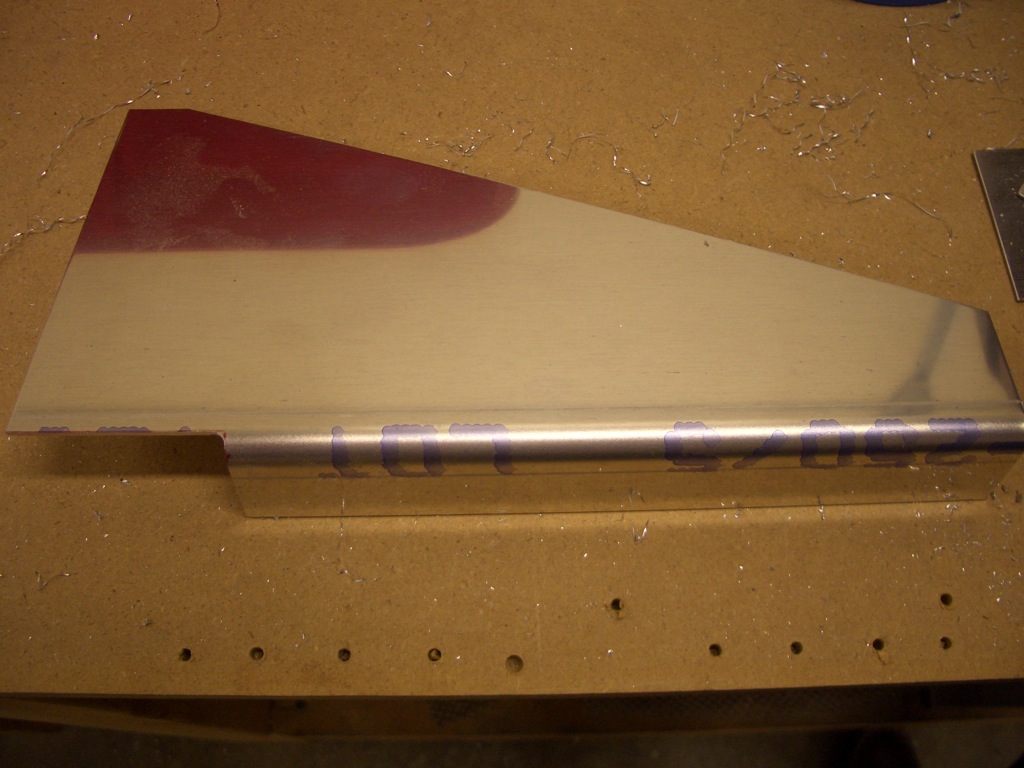
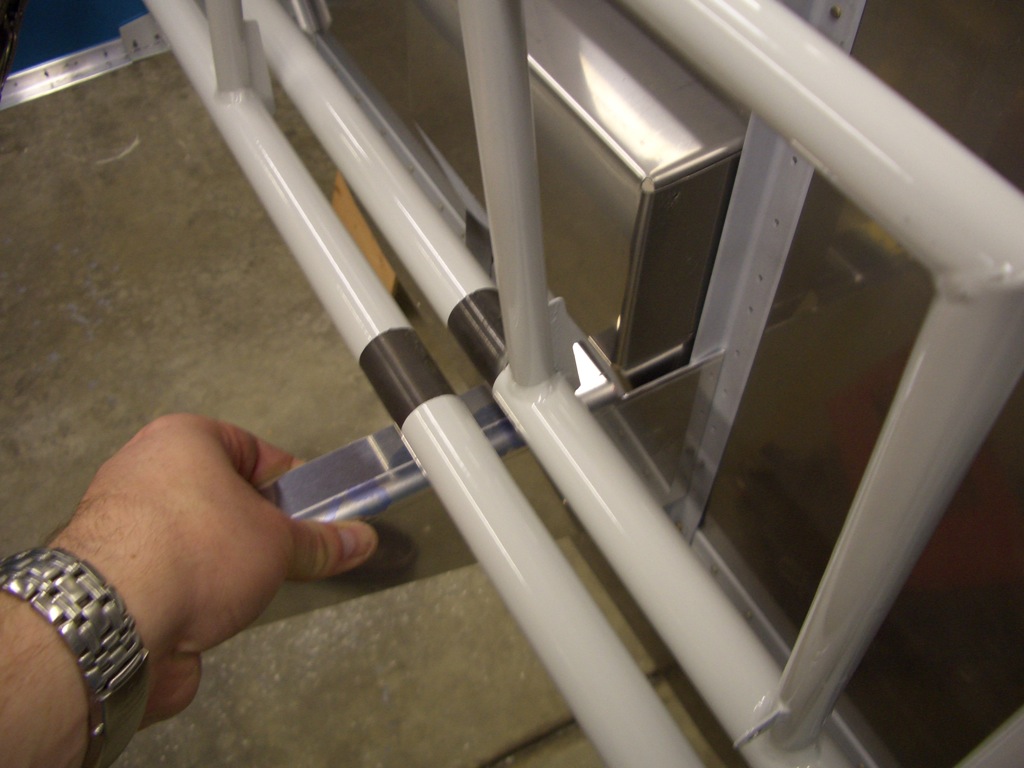
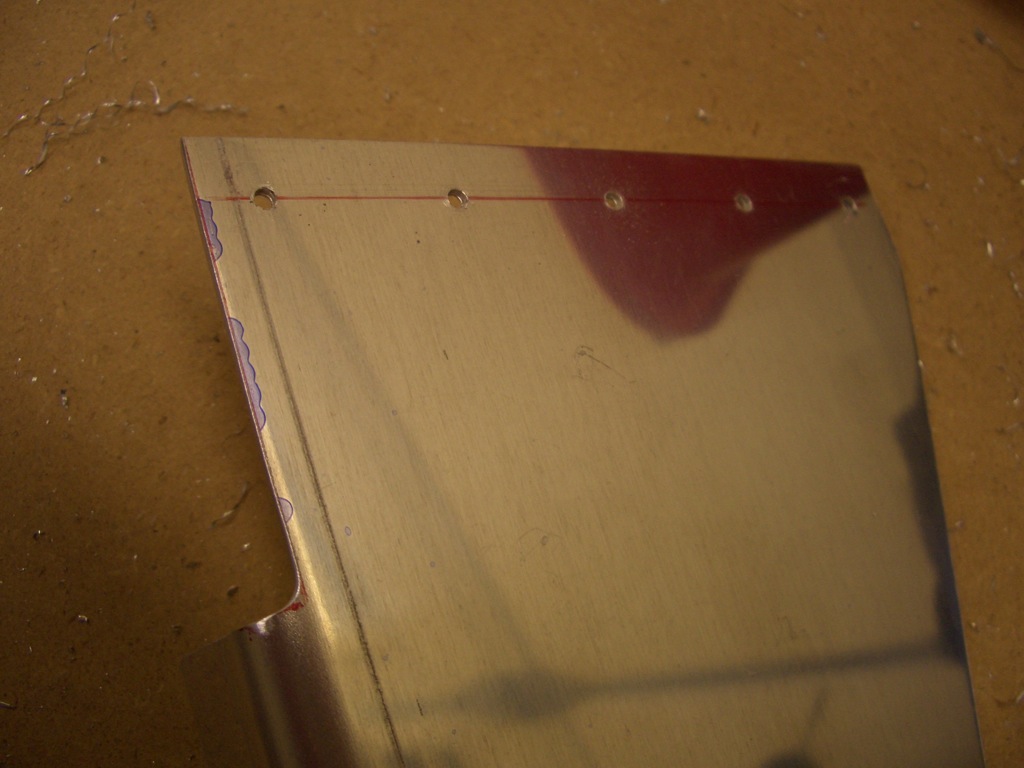
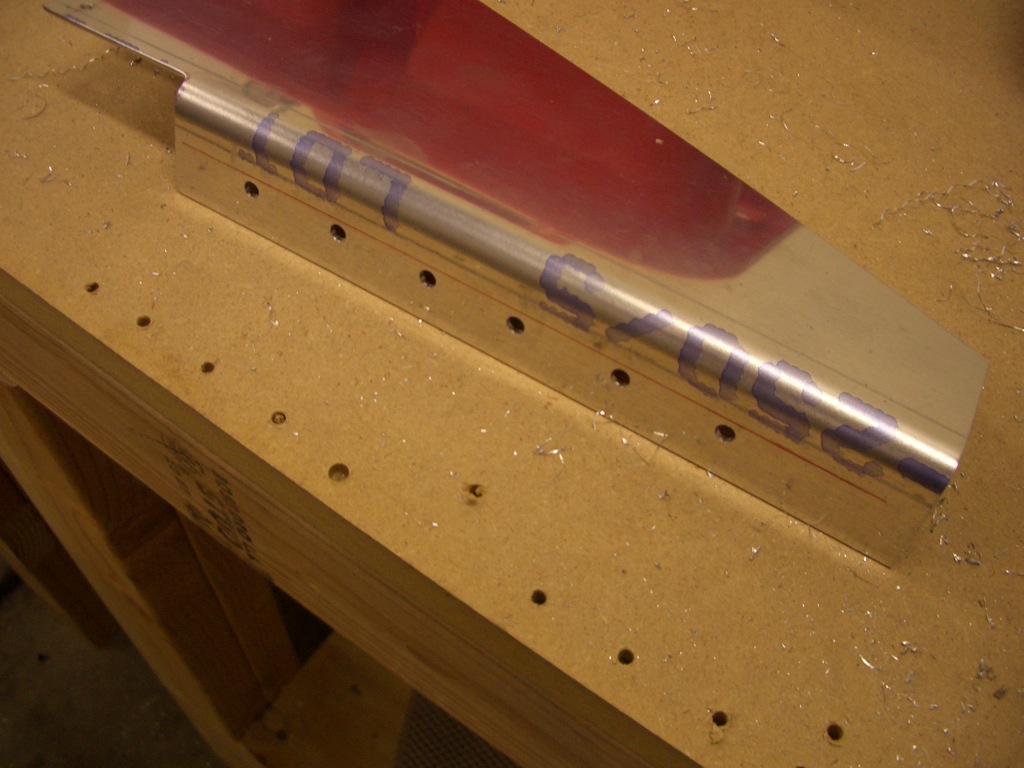
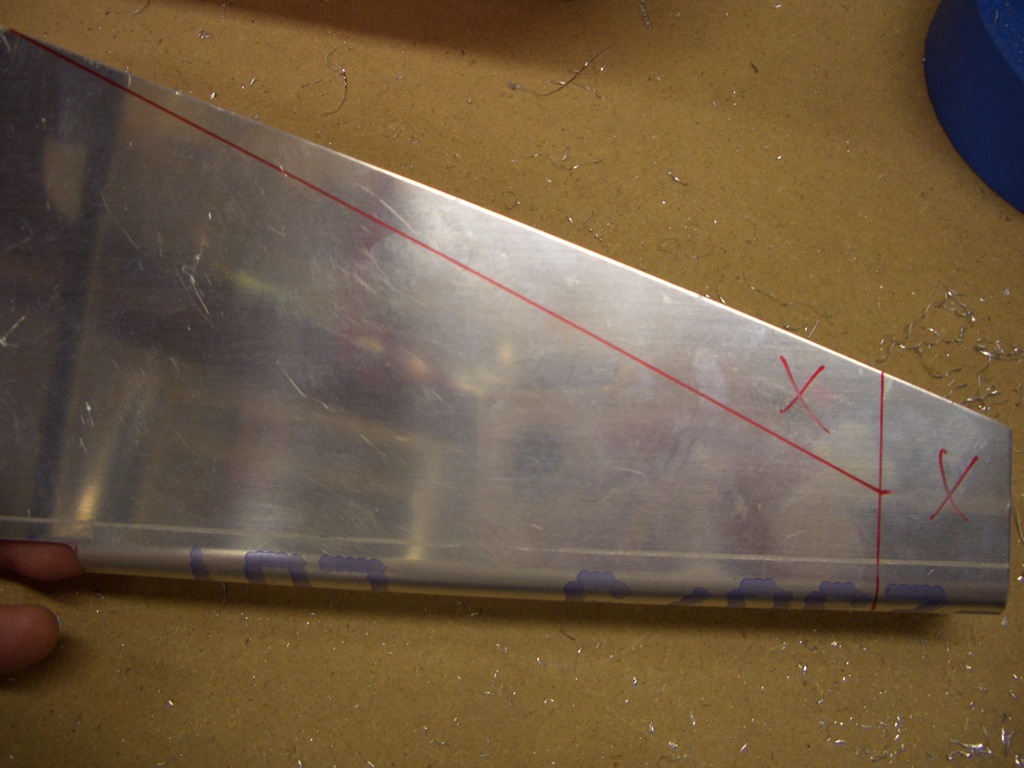
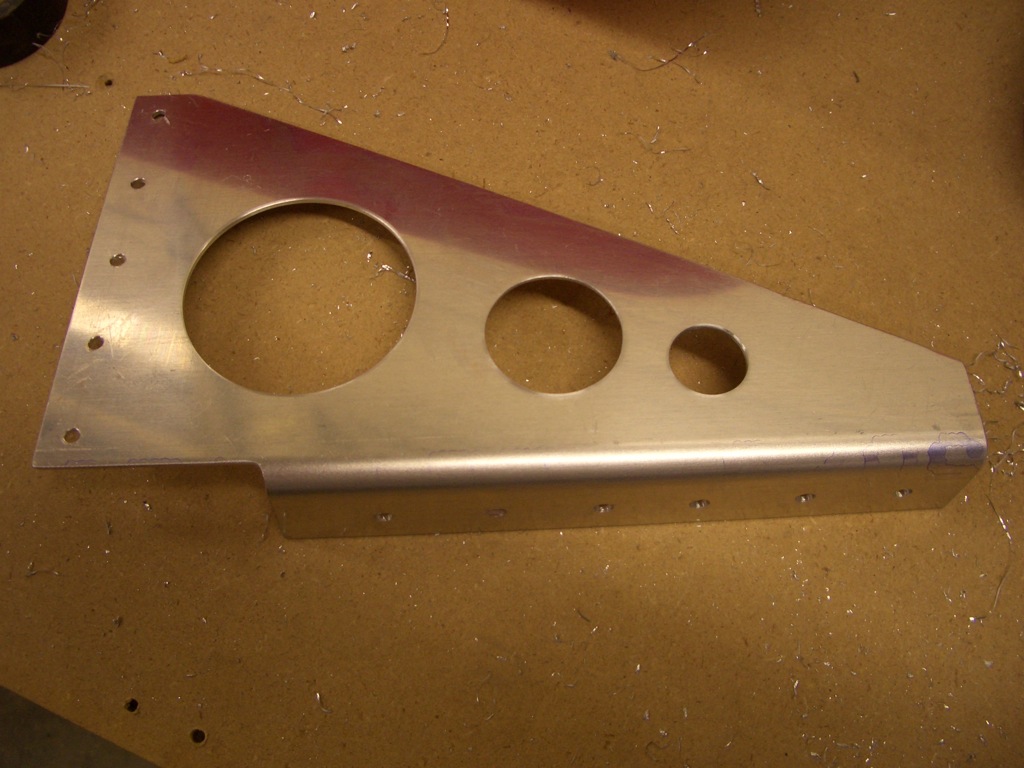

The center rudder pedal brace comes as a roughly shaped piece of thick alclad sheet with a bend along one side. First a notch needs to be cut out of this flange of the sheet to clear the firewall recess.






I drilled the mounting holes and cut the center rudder support block in half.
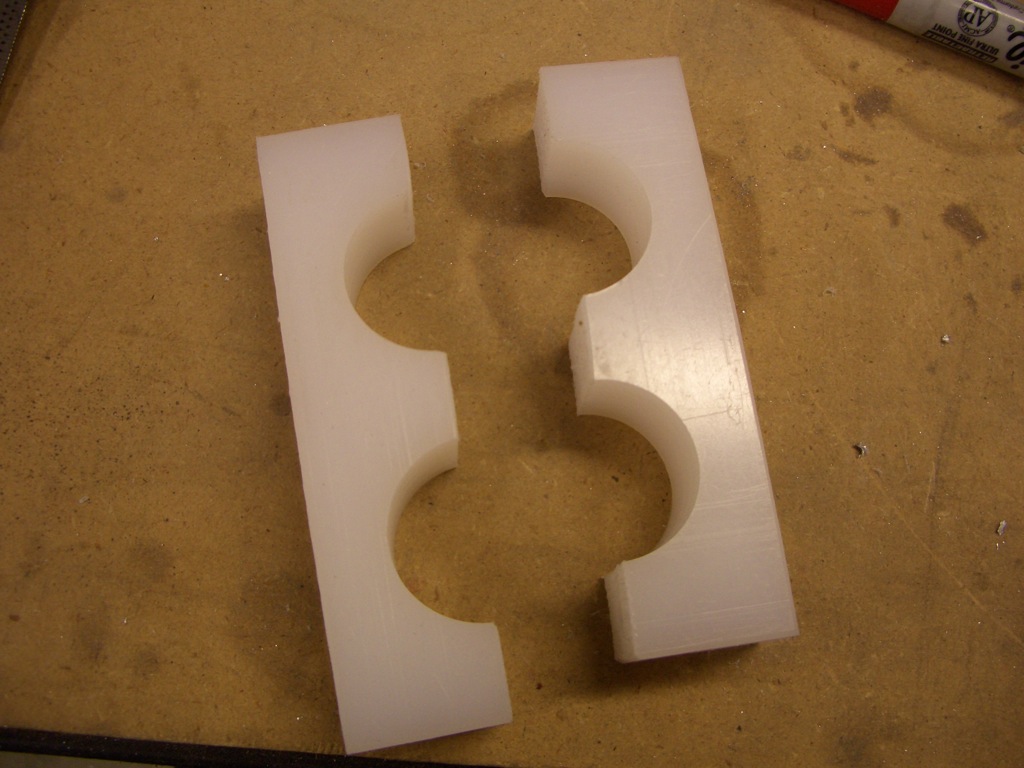
Next, I mounted an AN3 bolt in the drill press and filed a point in the tip so that I could mark for the hole in the brake pedals.
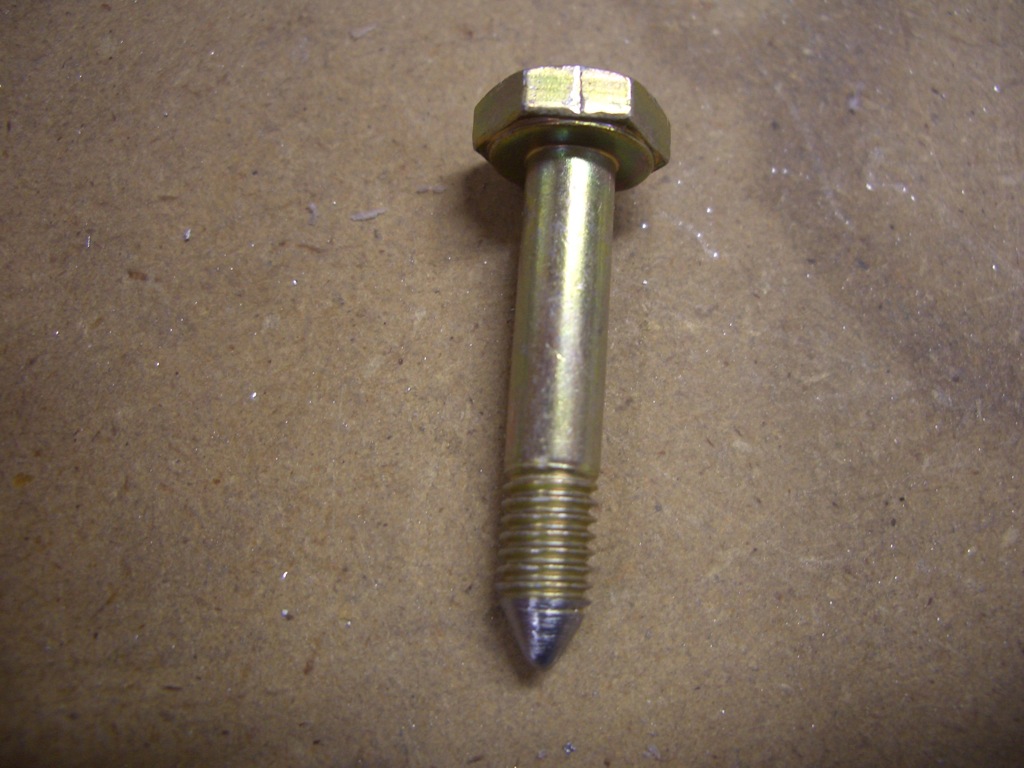
The bolt slips through the bottom flange of the master cylinder and is used to scratch a mark in the side bar of the brake pedal.
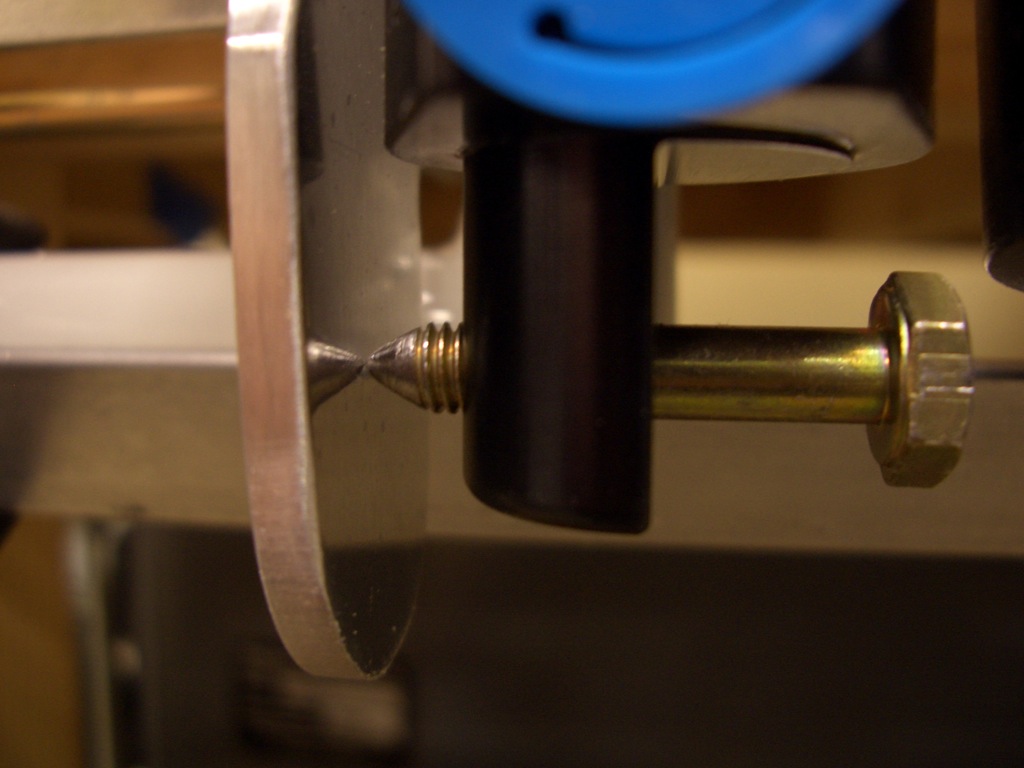
Then it is a simple matter of finding the center of the hole and drilling for an AN3 bolt.
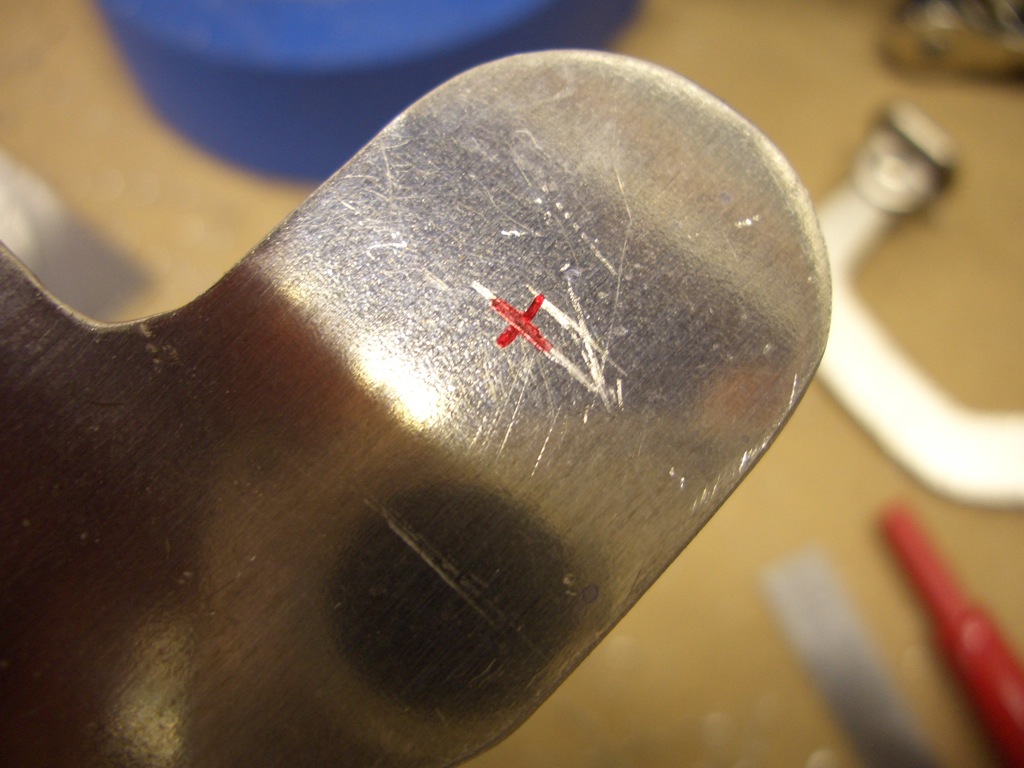
Then a few washers are used to space the master cylinders away from the brake pedal side bars. I’m not mounting these permanently now, but I slipped the bolts in to make sure everything moves smoothly with no binding.
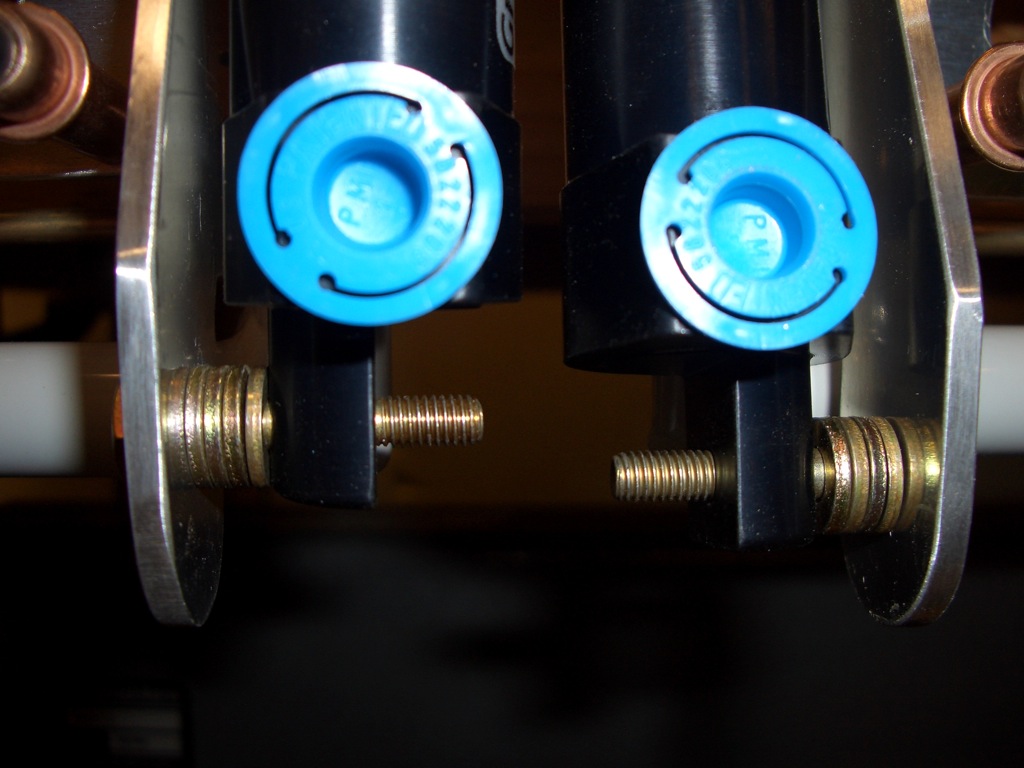
Next, I marked for three mounting positions for the rudder pedals. The plans specify that the support blocks be no closer than 3″ aft of the firewall. Since I’m tall (6′ 4″), I wanted the option of having the rudder pedals as far forward as possible. I put marks at 3″, 4 1/16″, and 5 1/8″ which is the dimensions that Dan Checkoway came up with and many have copied.
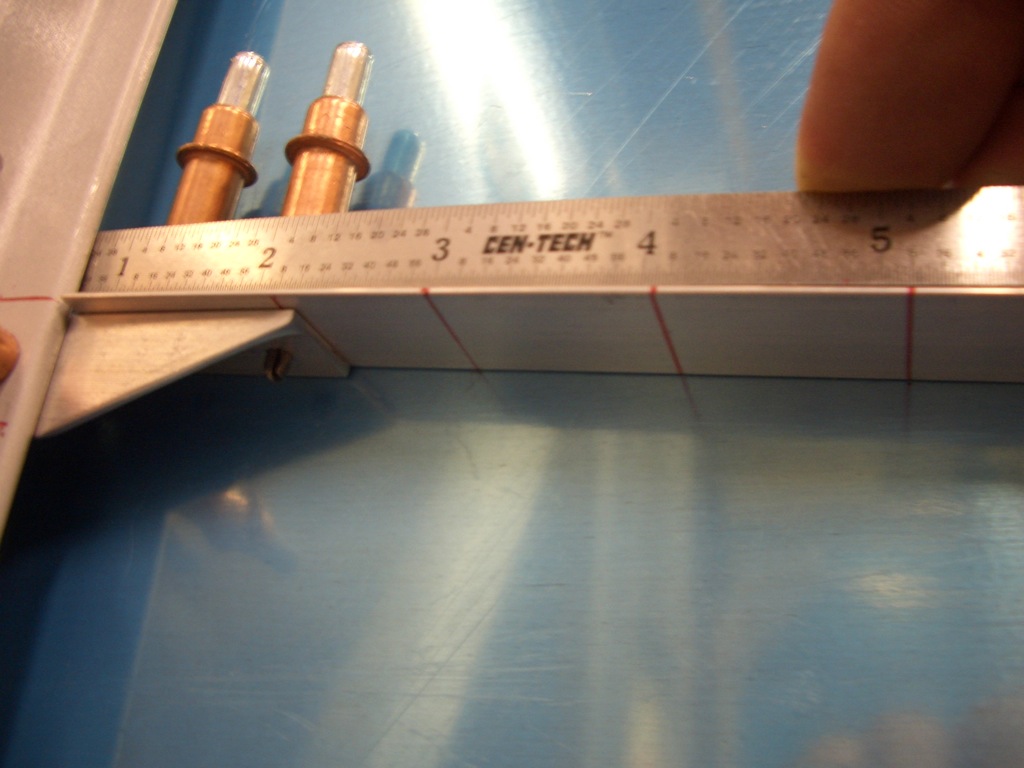
Here are the holes drilled in the left skin stiffener. I then repeated the process of the right side.
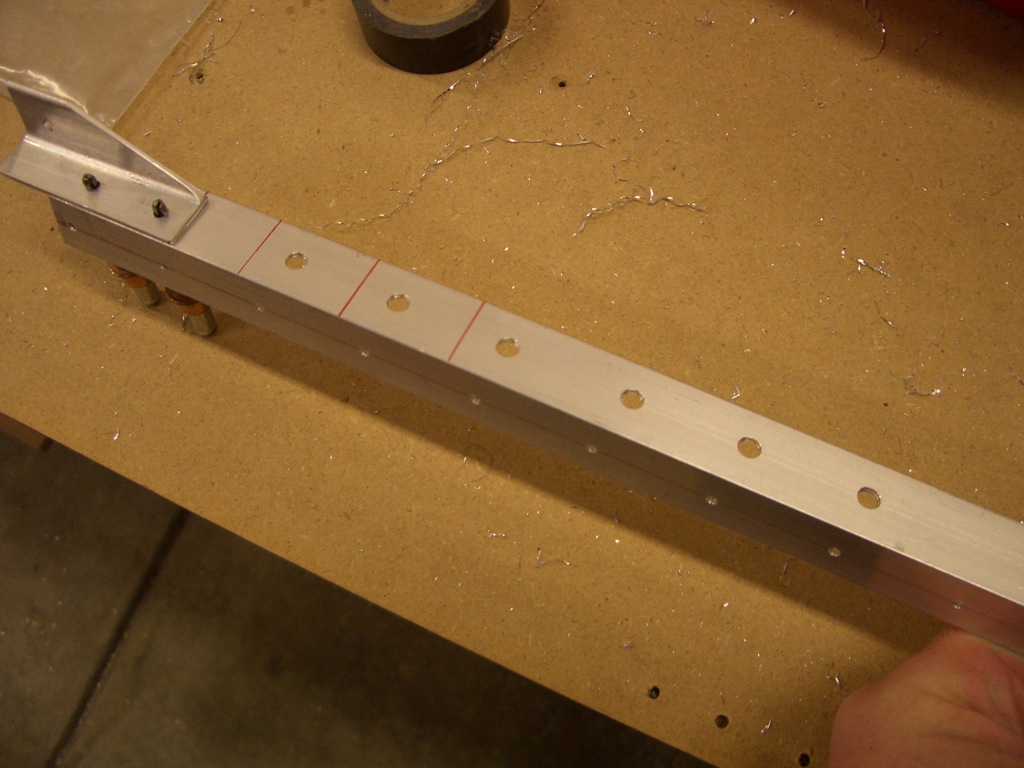
I then mounted the rudder pedals in the plane in preparation for drilling the center support. It’s late, so this is a good place to stop.
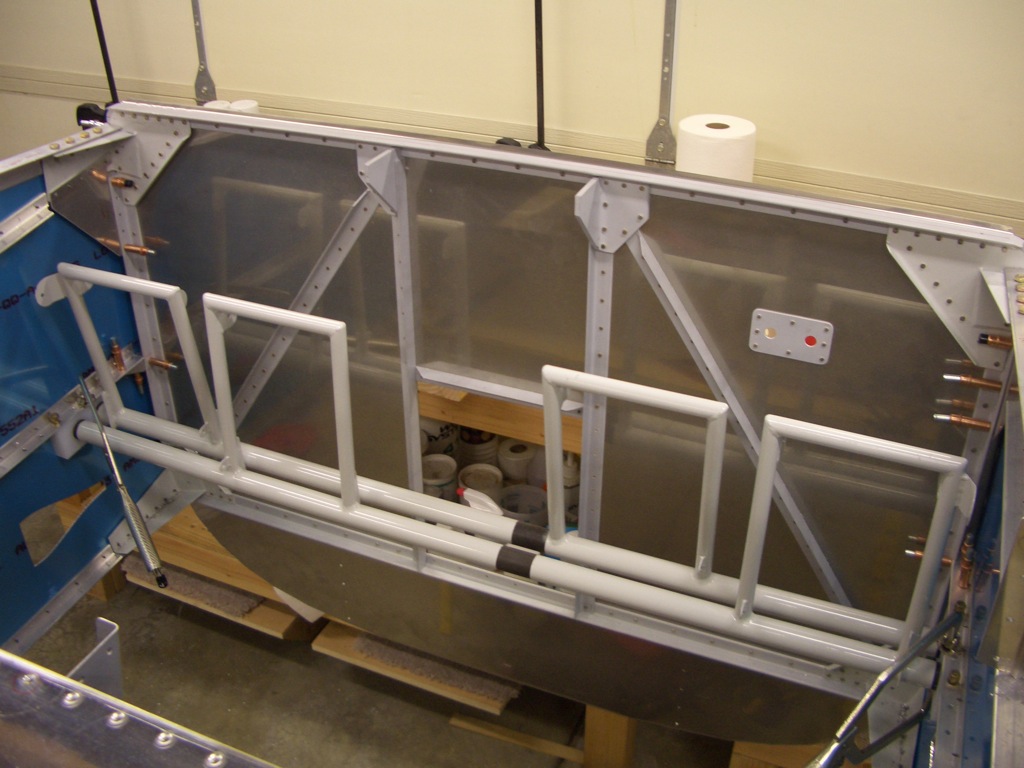
I started tonight by fabricating the shims that fit between the aux and lower longerons at F-902. An angle will sit on top of these shims that will serve as the structural support for the forward tank attach bracket.
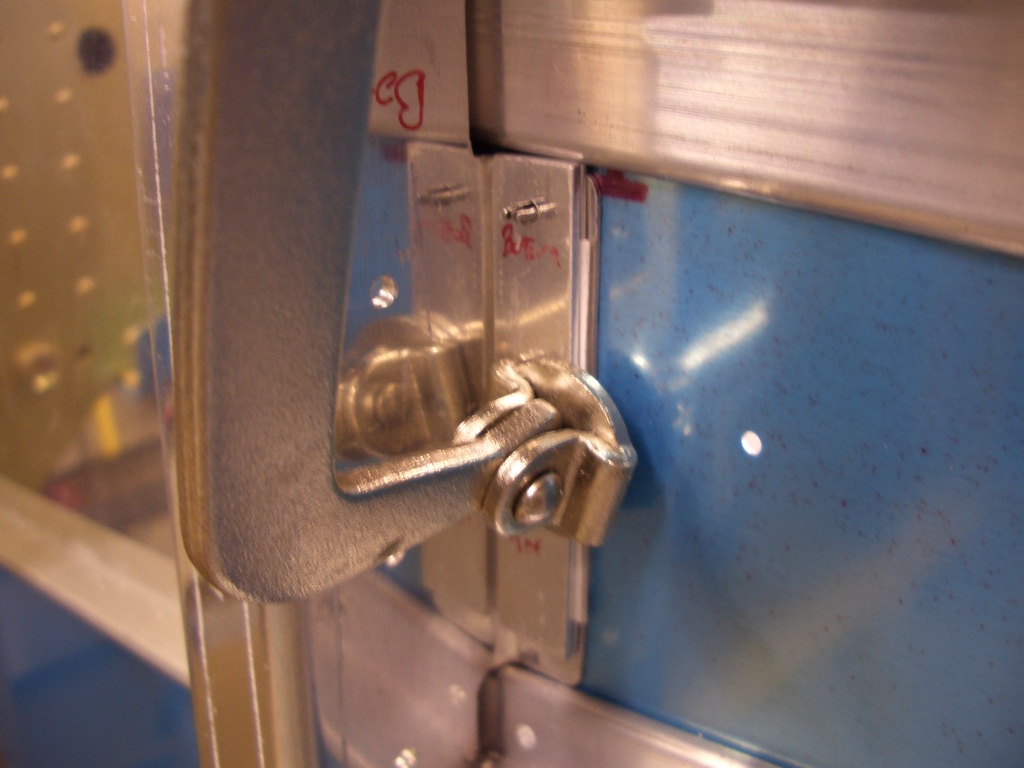
Unfortunately, when I took the clecos out of the gear web, the holes shifted. It looks like I didn’t get the gear web fully seated in the aux longeron before match drilling it to the bulkhead. This side is about 1/16″ off, the other side is about 1/32″ off. I need to order some things from Van’s anyway, so I’ll go ahead and replace the bulkheads.
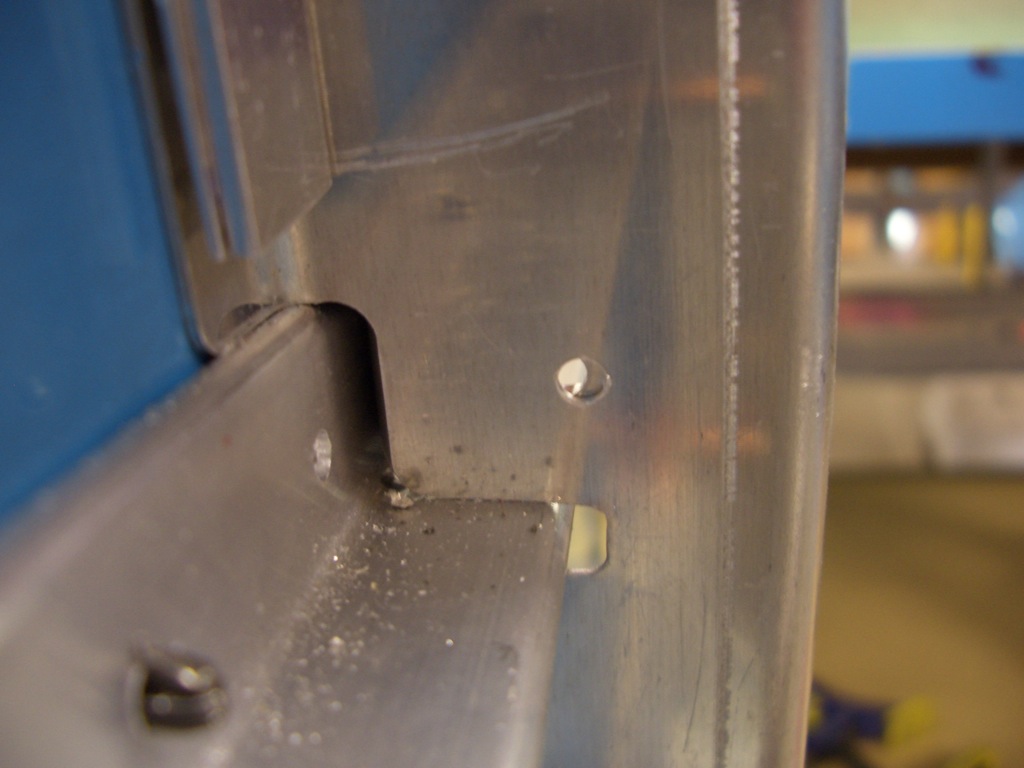
I skipped to the next section and began assembling the brake pedals. I made the optional lightening cuts since every ounce counts. Instead of the diagonal cuts at the bottom of the pedals, I cut a 1/2″ radius curve to match the radius of the lightening holes in the pedals. The additional weight savings is negligible obviously, but I think it just looks better.
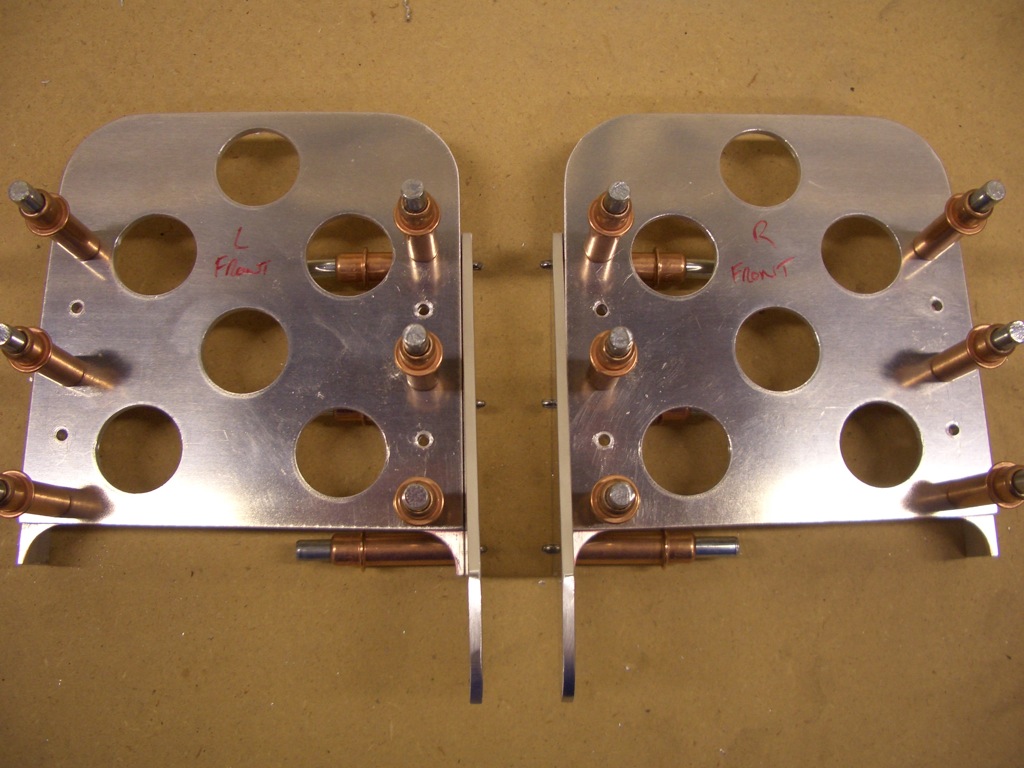
I drilled the UHMW rudder support blocks for the AN3 bolts that will be used to attach them to the skin stiffeners. I’ve heard other builders complain about drilling this plastic, but if you turn your drill press down low and feed fairly aggressively (3-4 seconds to drill all the way through), the plastic comes out in one single shaving and the hole is perfectly clean. You don’t even need to clamp the block (though make sure you hold it down firmly as you back the bit out).
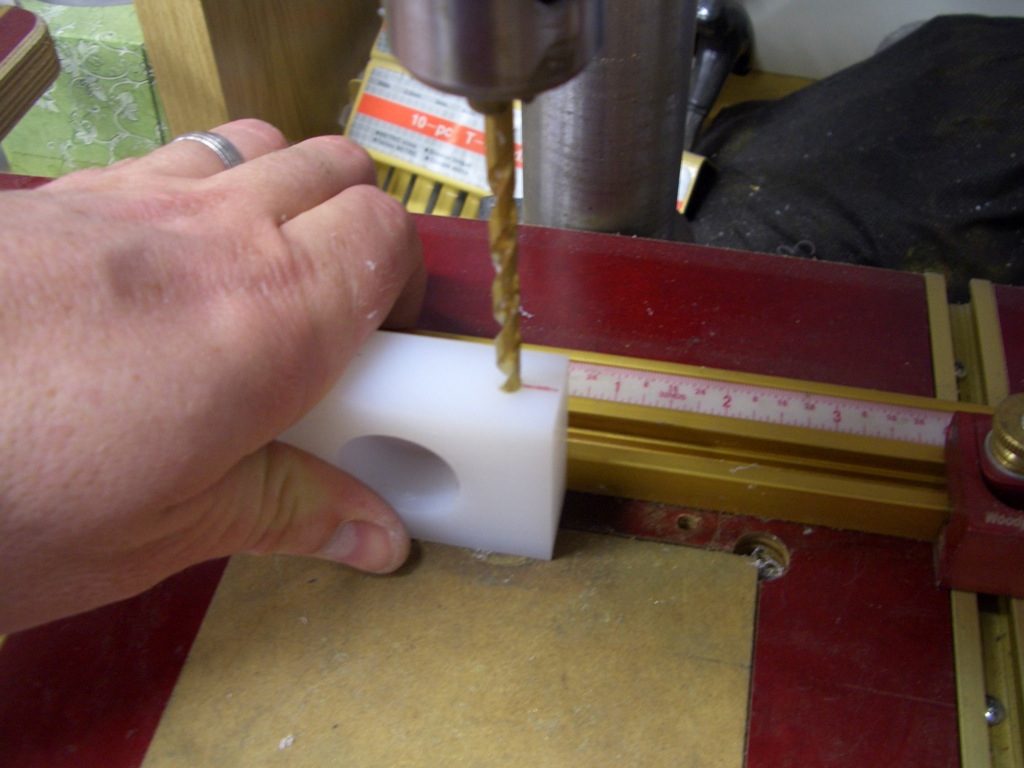
I mounted the rudder tubes to the support blocks. Make sure you pay attention to the orientation of the blocks. The holes are not drilled perpendicular to the sides since the skin supports taper inward toward the firewall.
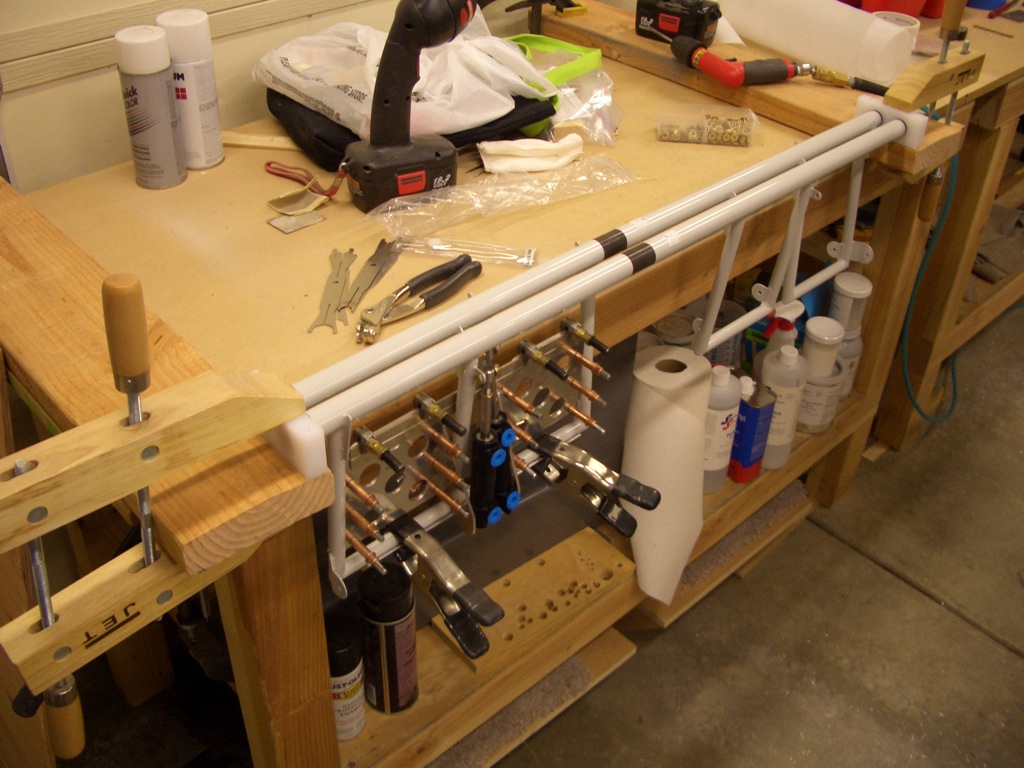
I clamped the rudder bars together with a piece of scrap angle and clamped the brake pedals together using a thick steel rule. These are not the stock master cylinders that Van’s supplies (which are made by Matco). These are made by Grove. They are higher quality than the Matco units and are adjustable.
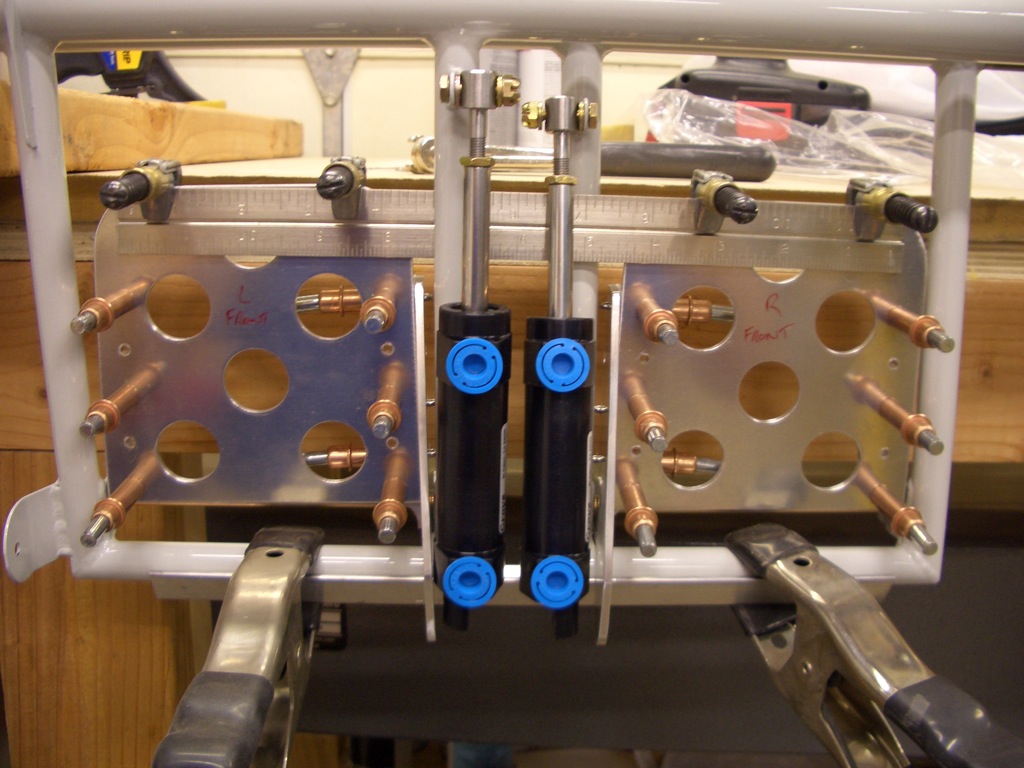
The F-902 bulkheads need some tooling holes enlarged to 5/8″ for the rudder cables. The aft flange also needs to be relieved so that it won’t interfere with the cable. I also fluted the outside flange to bring the holes in line.
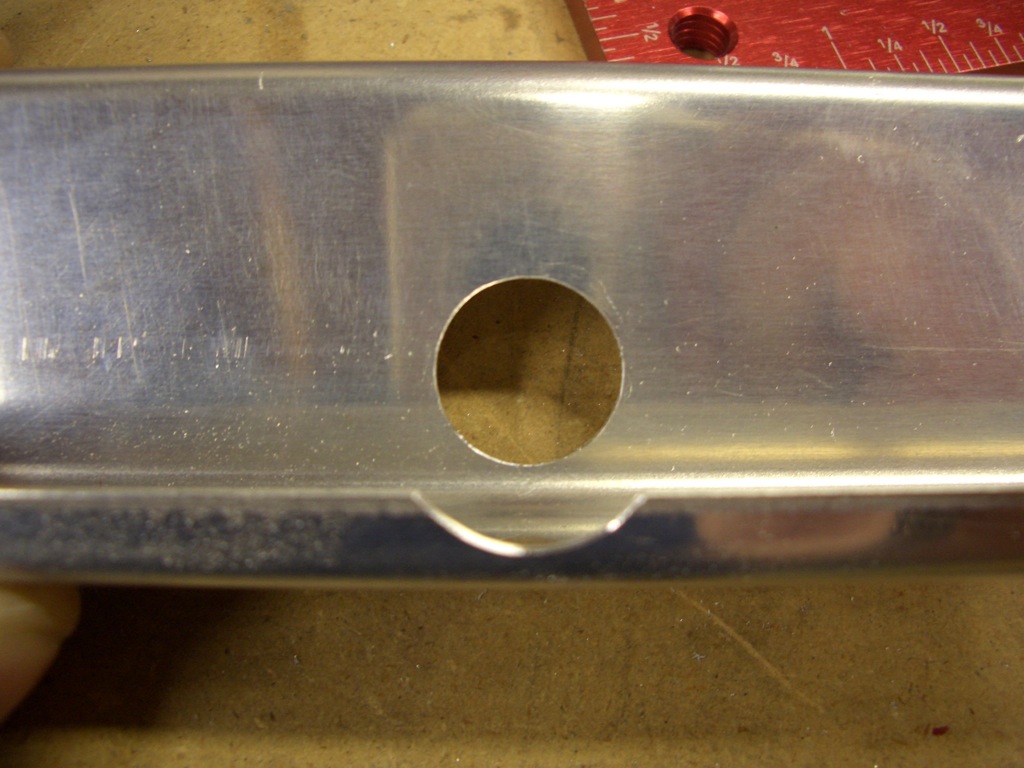
Nutplates are attached to the aft side of the bulkhead so that the fuel vent line can be attached with adel clamps.
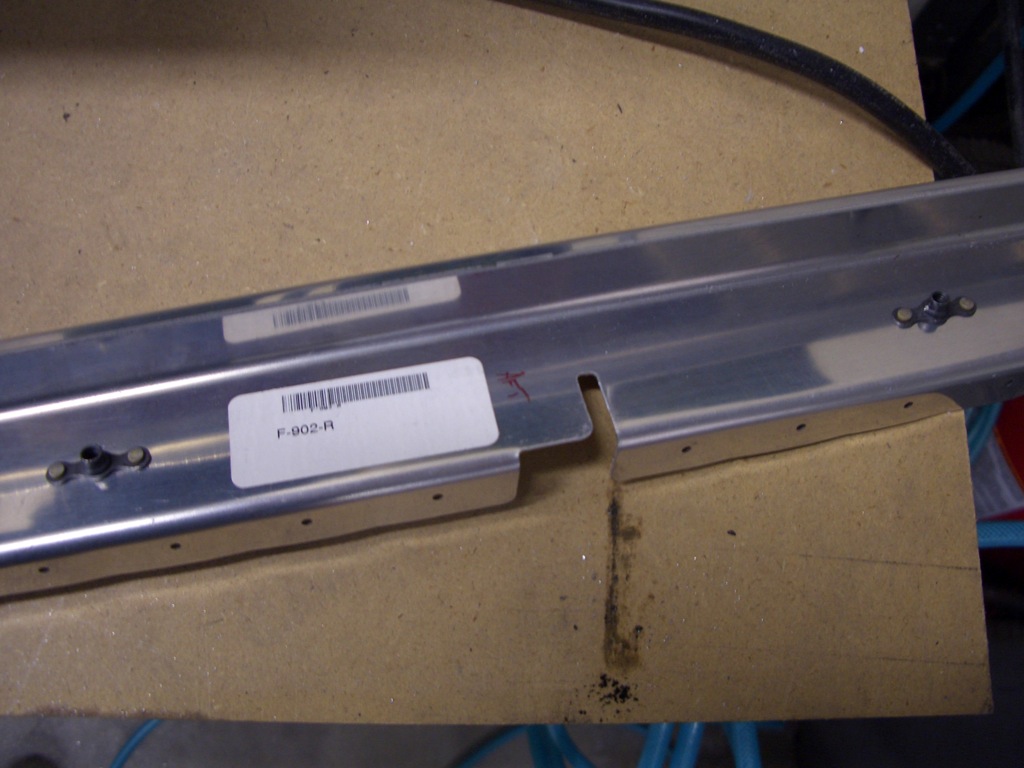
Here is the right side clecoed in place. Don’t bother at this point, I had to remove it to get the gear attach web in place.

I fit some 0.040″ thick scrap (the blue piece at the top) in place to correctly space the lower longeron away from the side skin. I then clamped everything tightly together and drilled the gear attach web to the F-902 bulkhead.
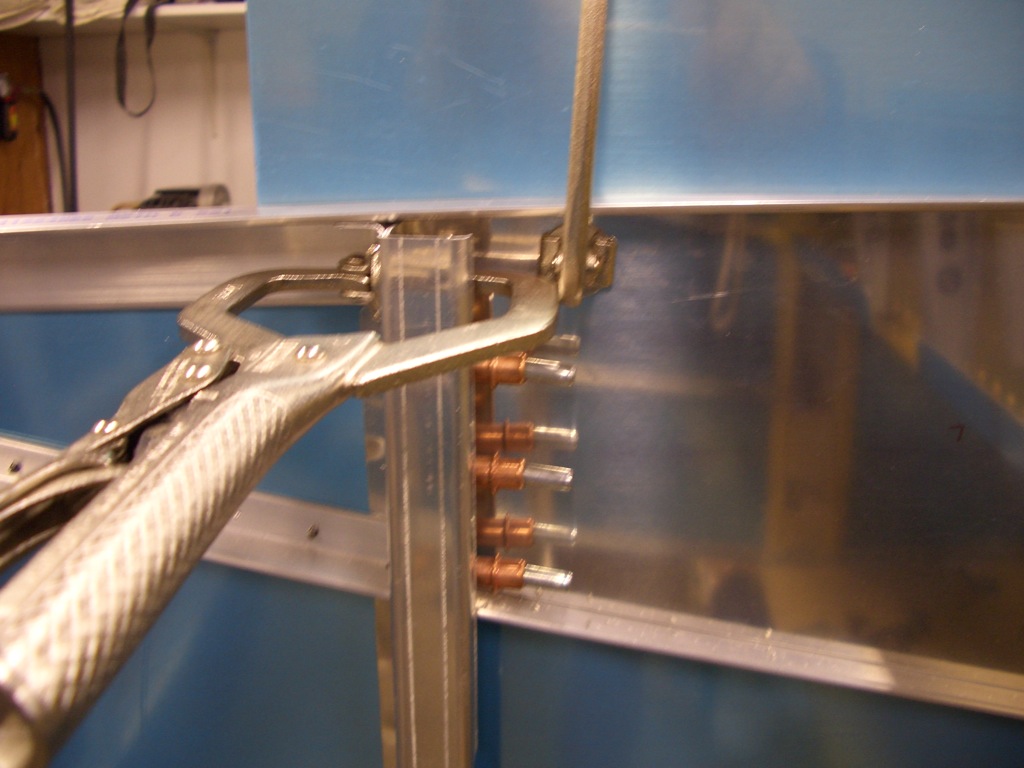
Now that the bulkhead is positioned correctly, the bottom flange can be drilled to the lower longeron.

The upper flange can also be drilled to the upper longeron.
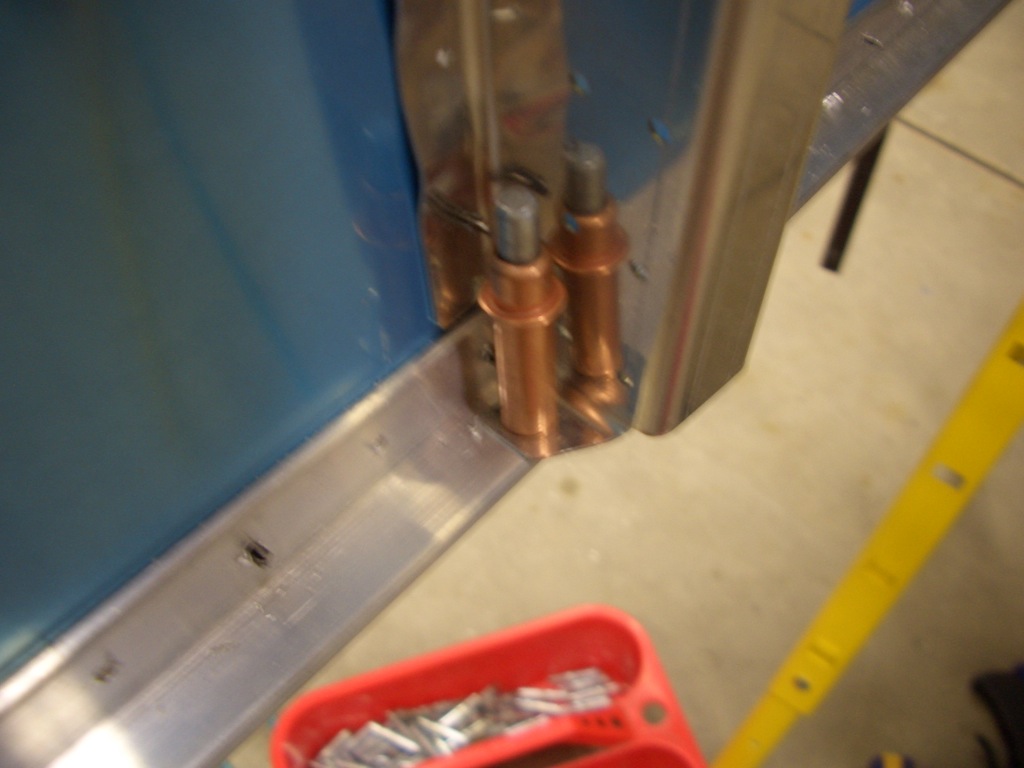
I then repeated the steps on the right side.
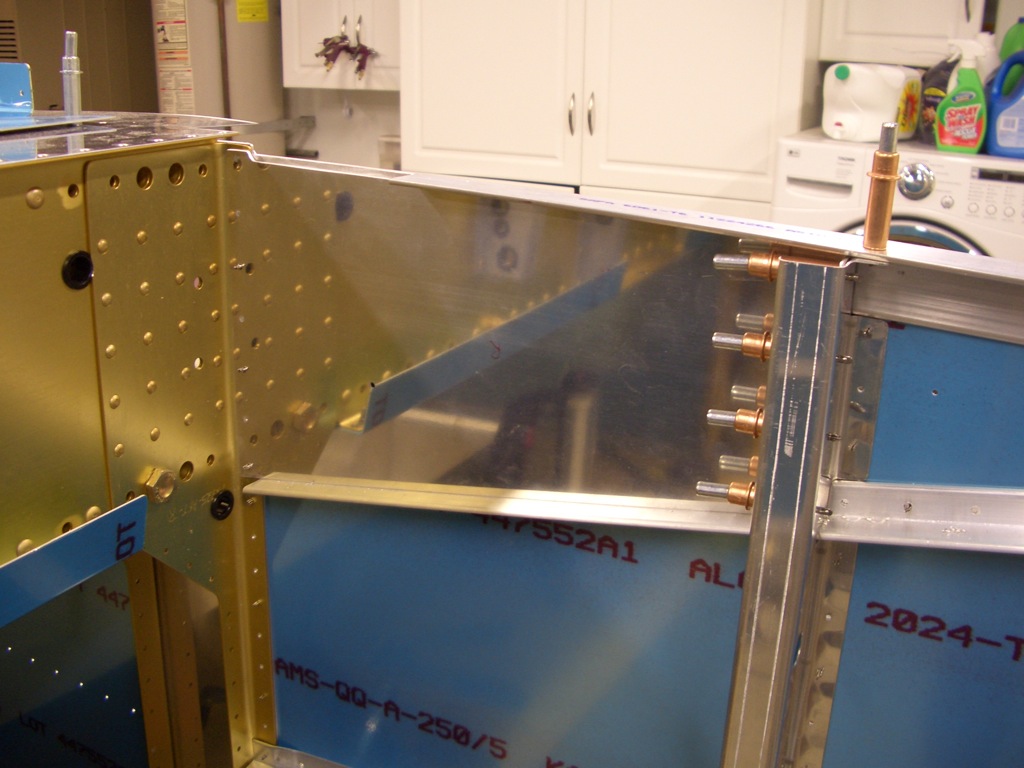
I fit the lower right longeron. Here is the forward end showing how it tucks around the lower engine mount. I also drilled the bottom holes out to #30 to see what kind of edge distance I’d end up with on the mount. You can sort of tell here that I biased the holes 1/16″ inboard of the center point on the longerons to give me slightly more edge distance on the steel.
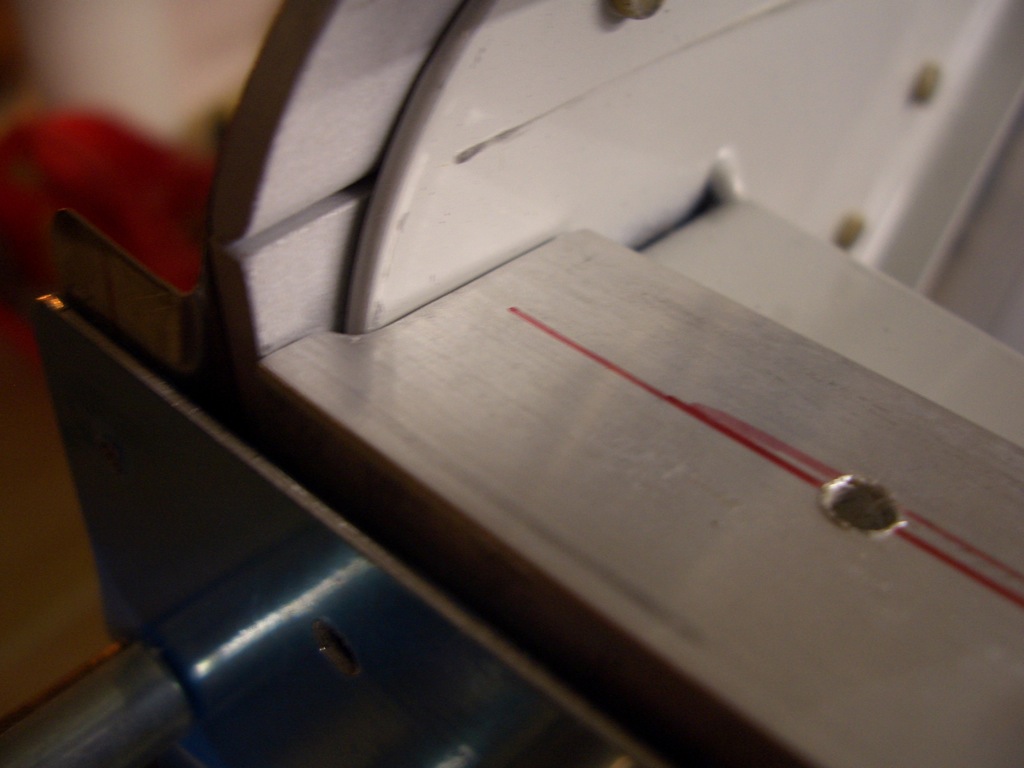
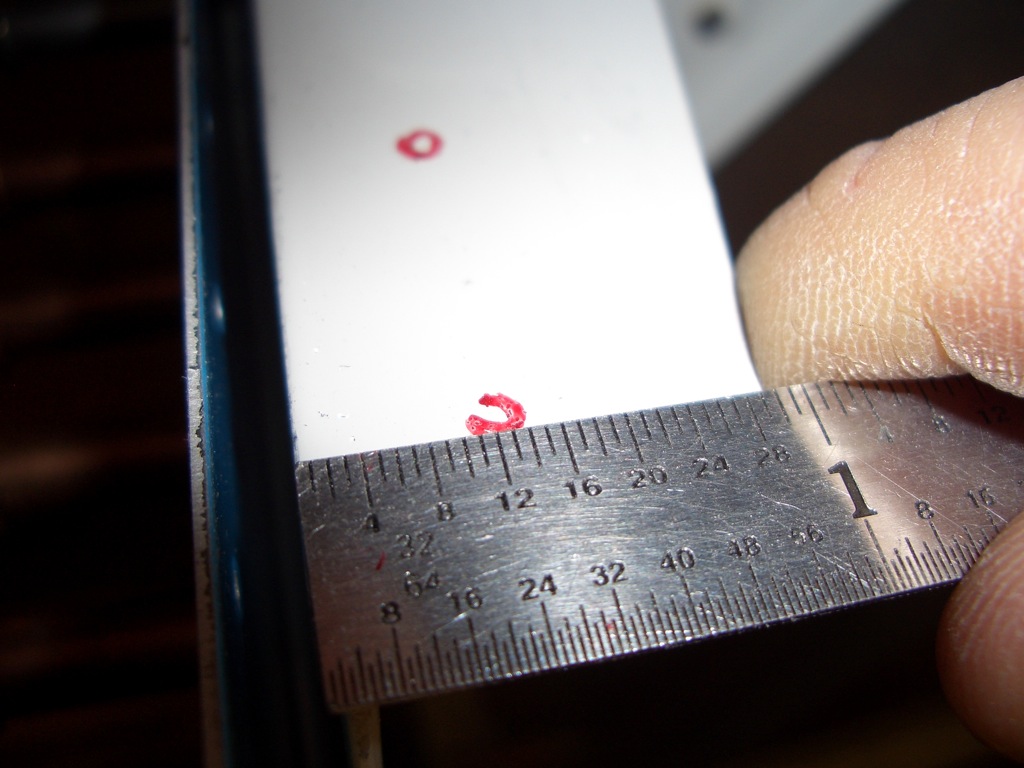
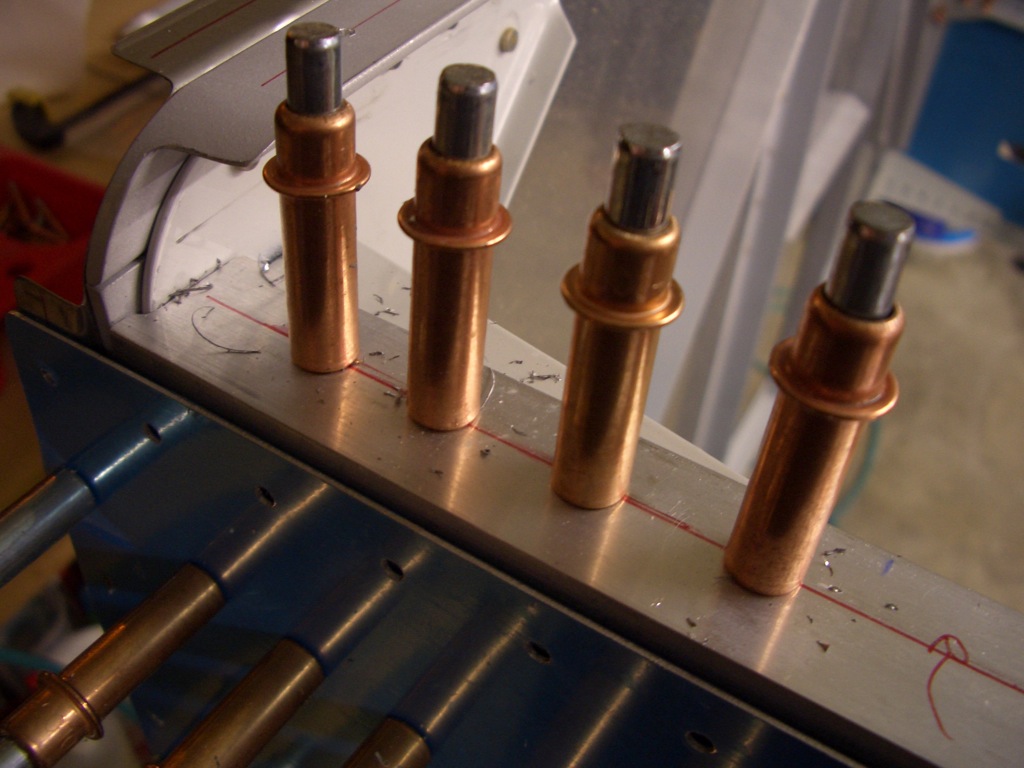
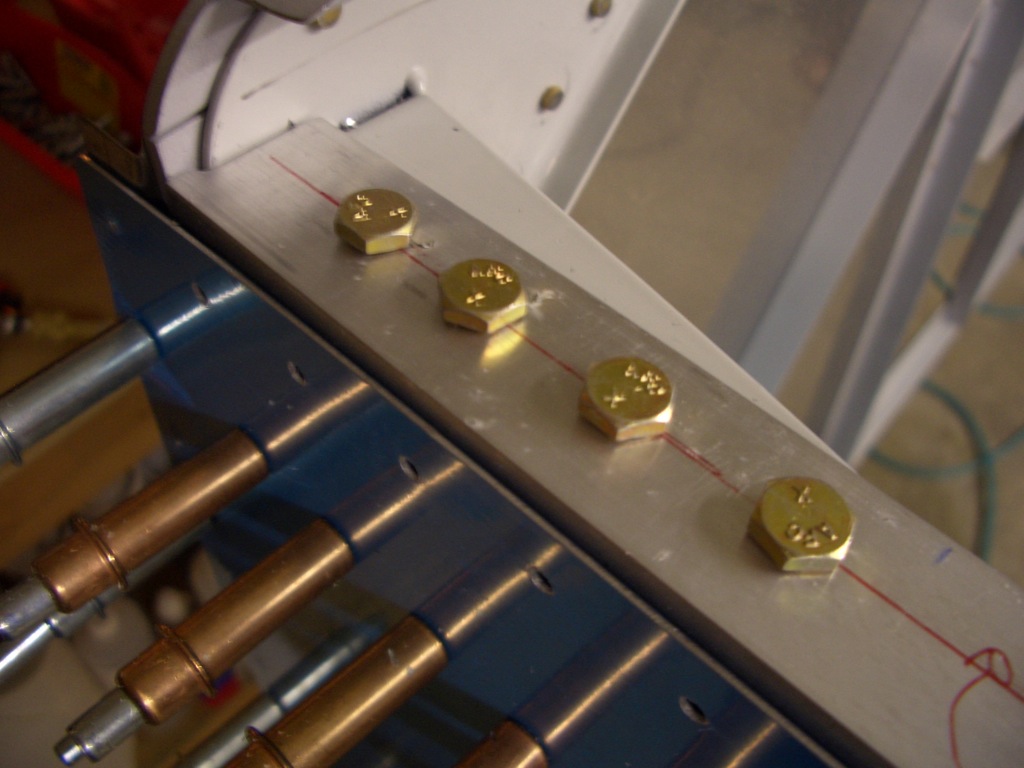
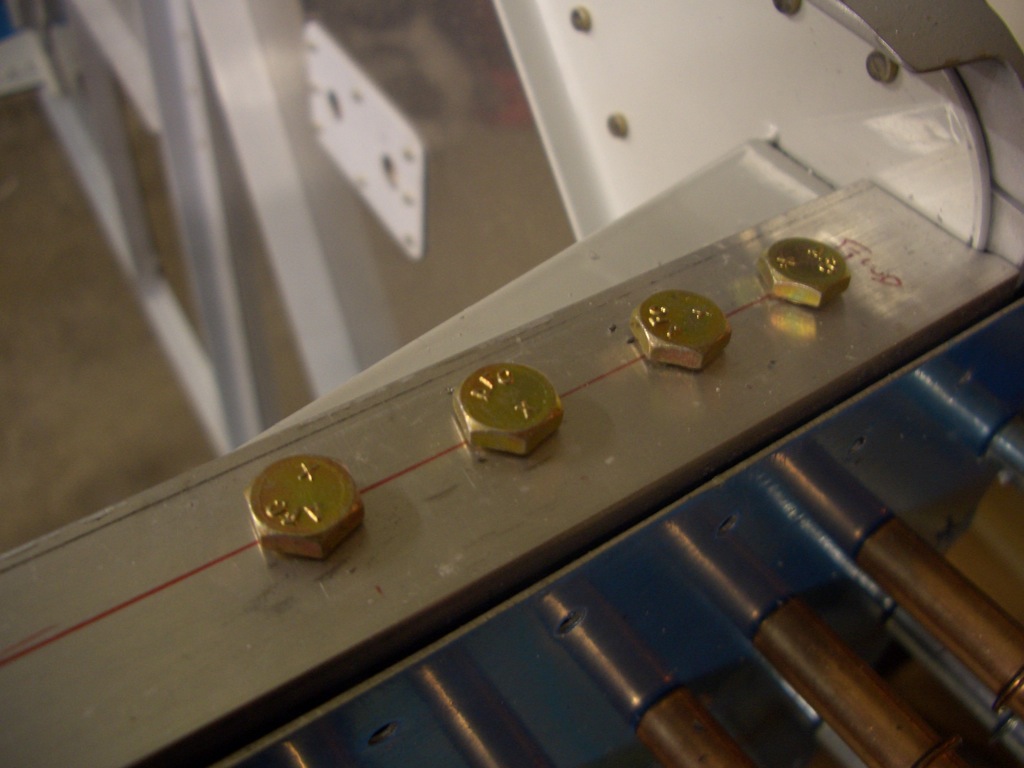
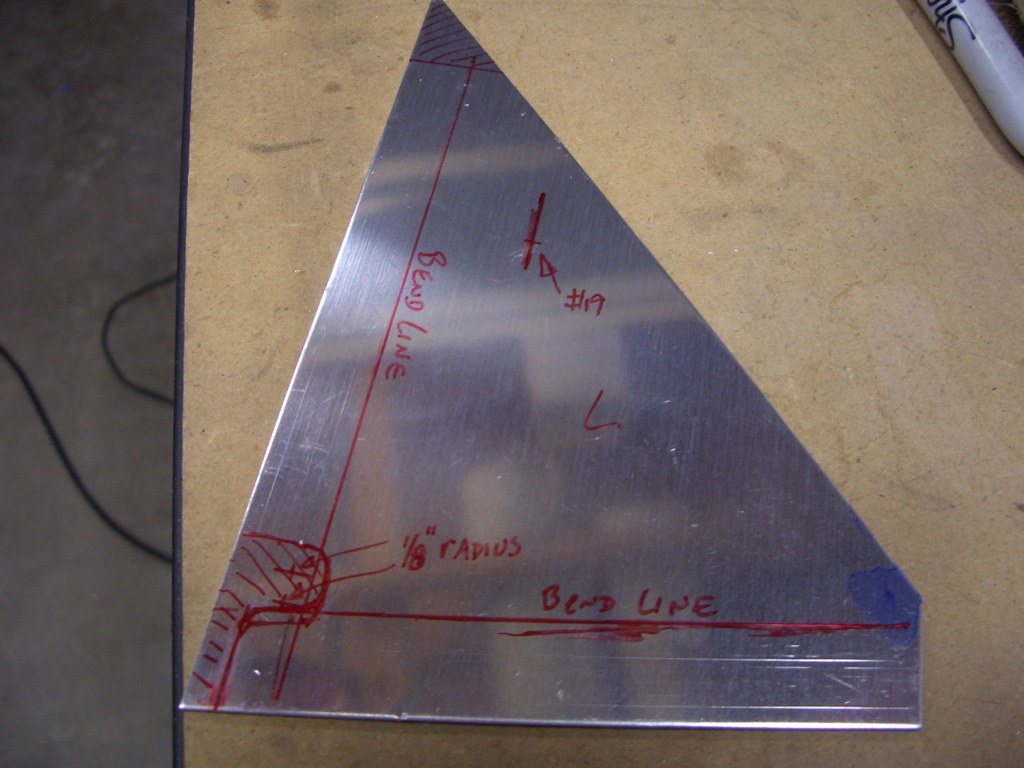

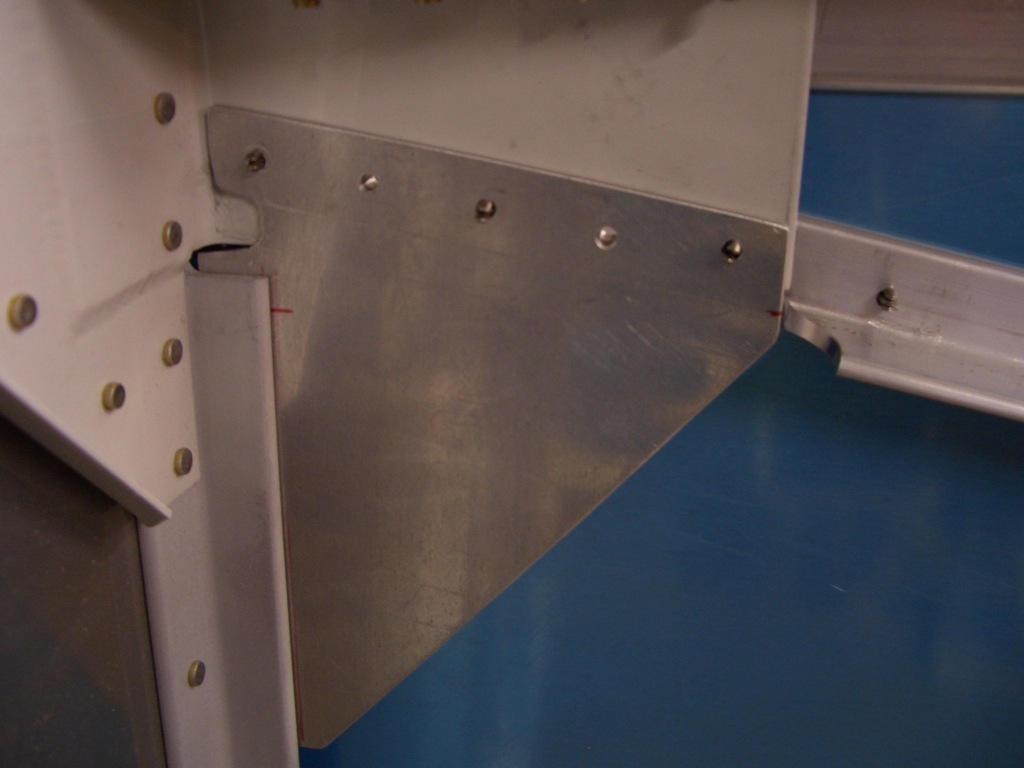

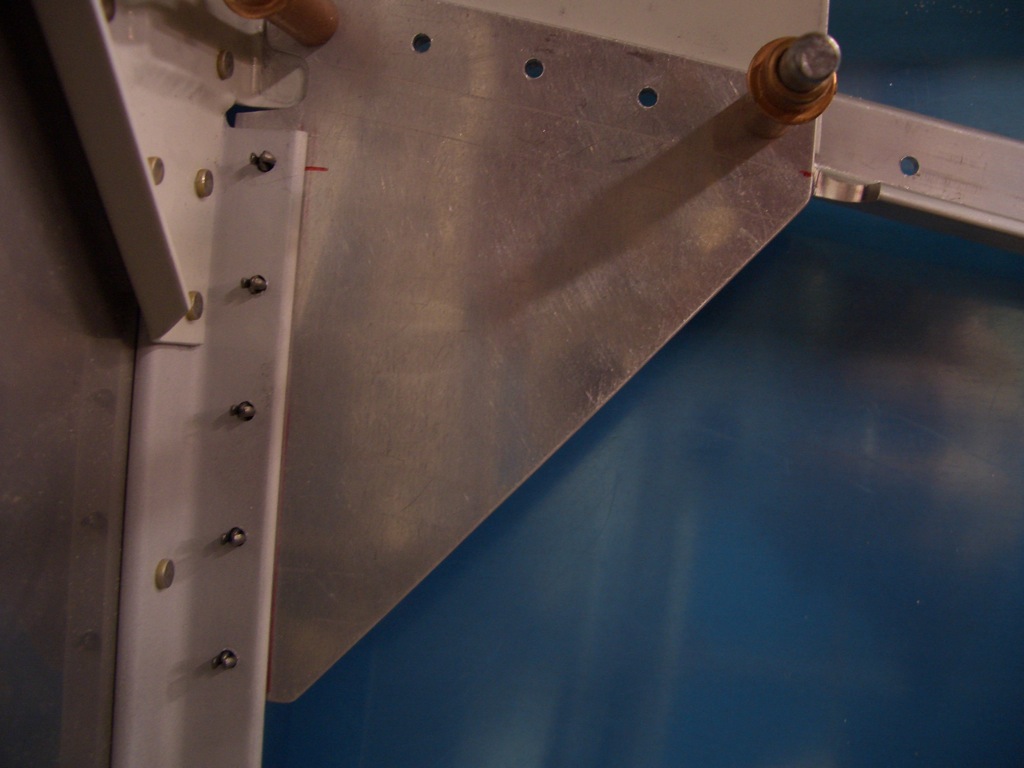

I got started tonight by drilling the right skin stiffener. Just like most other tasks, the second time went much faster than the first.
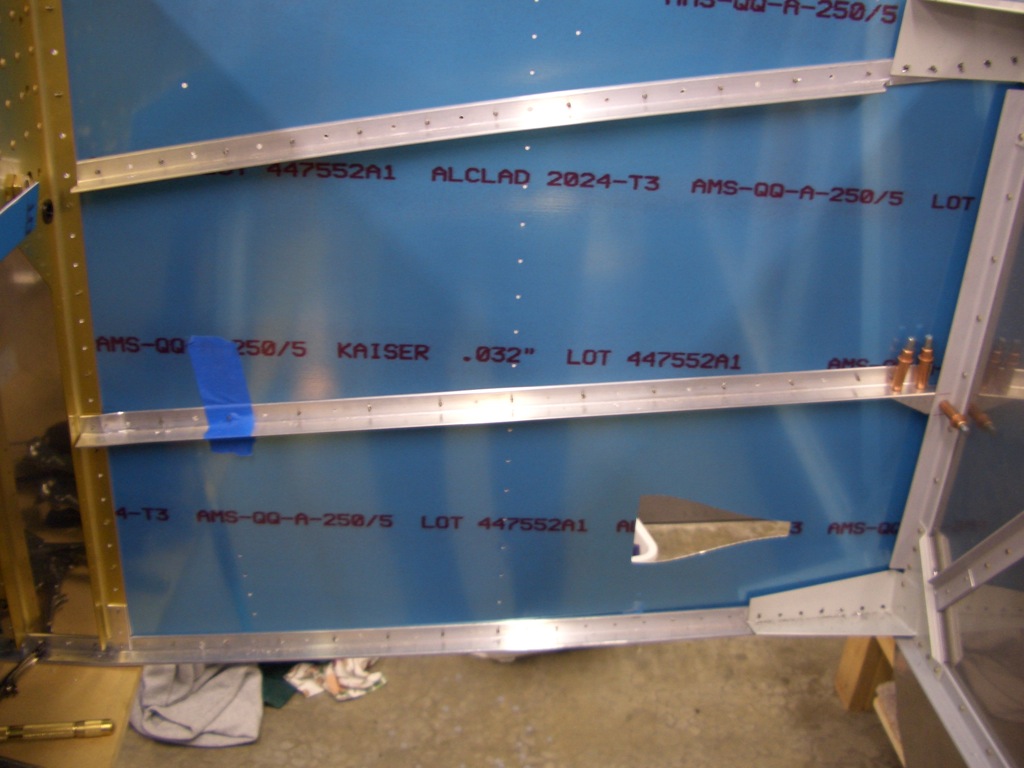
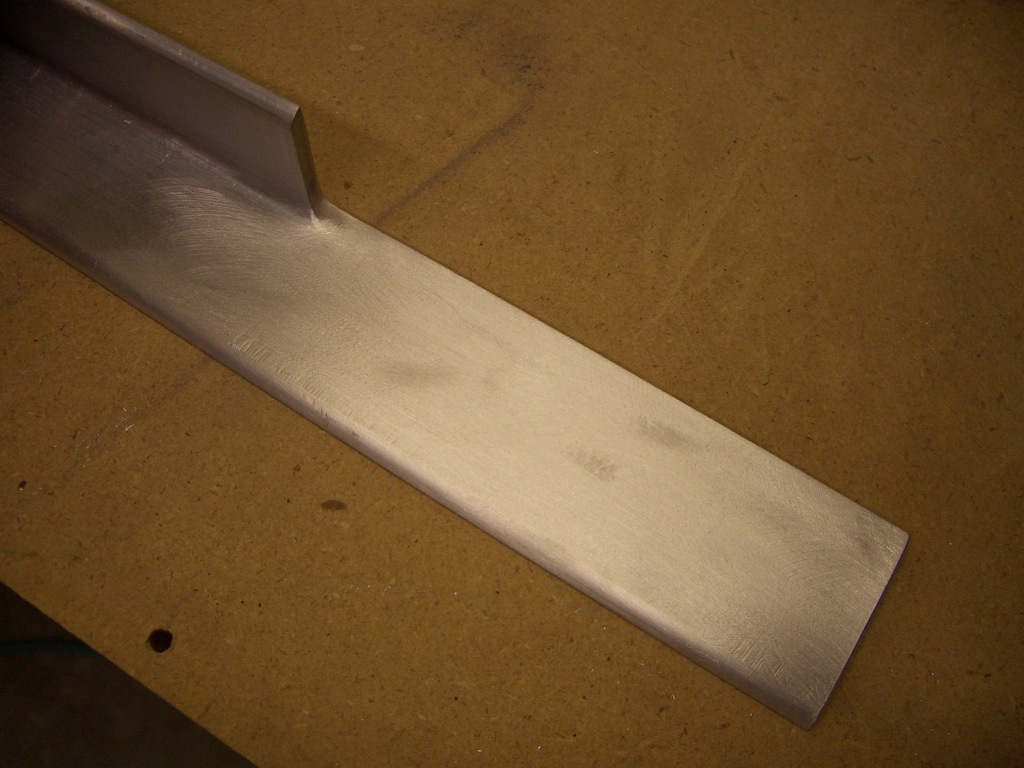
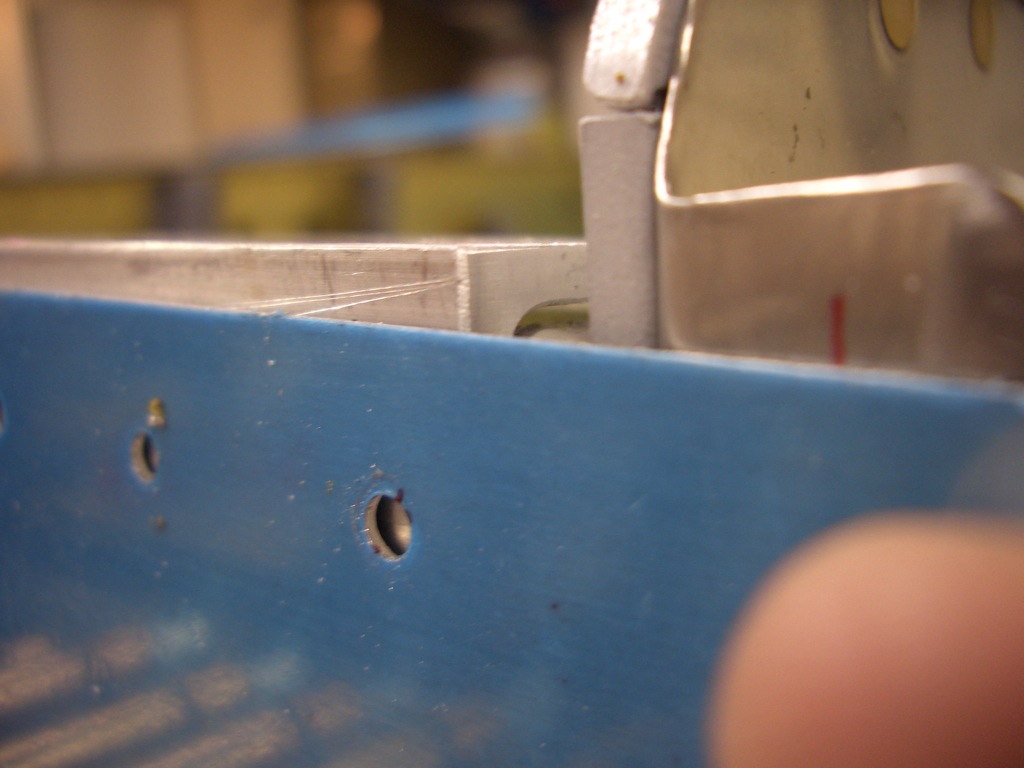
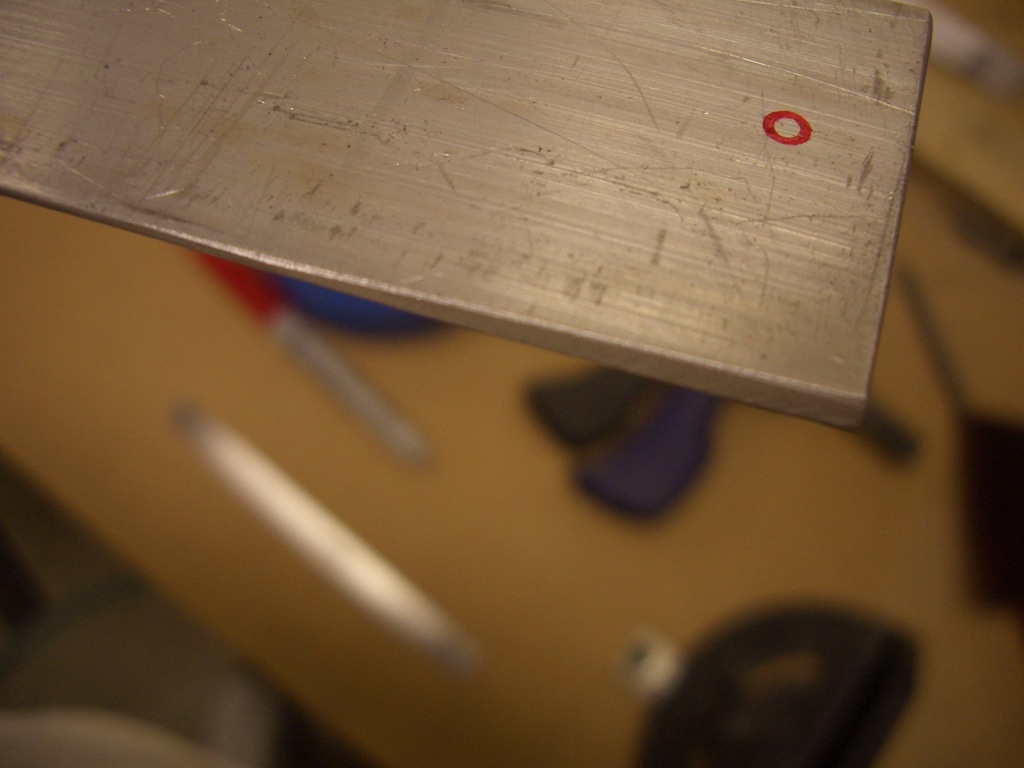
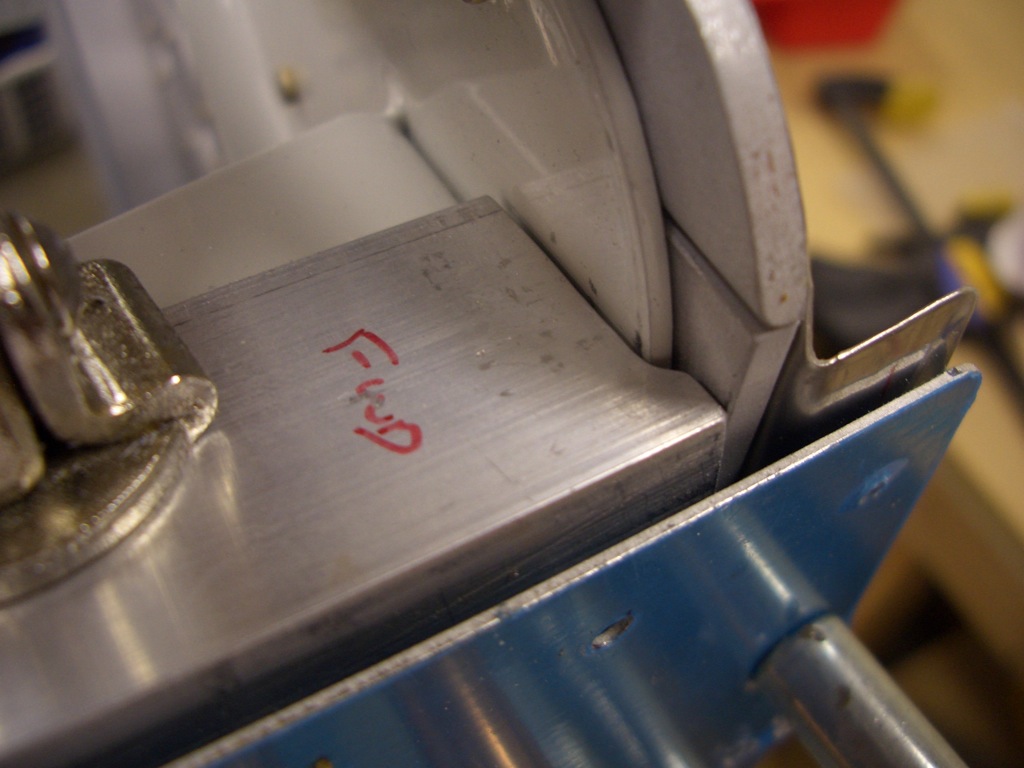

Update: I spoke with Ken at Van’s the next morning and he confirmed that 10/32″ was fine.
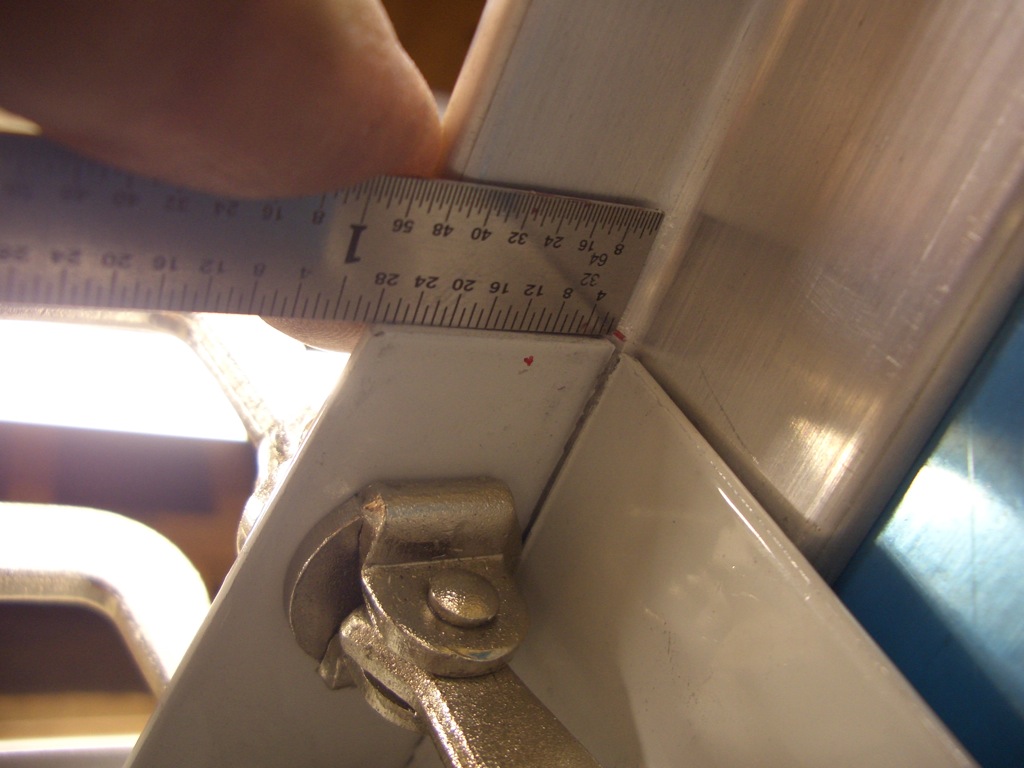
I fabricated the two F-719B angle clips from some raw stock. I subsequently drilled the two holes on the edge that mates with the skin stiffeners. I didn’t drill the hole in the other leg since there would then be no easy way to match drill it to the firewall stiffener.
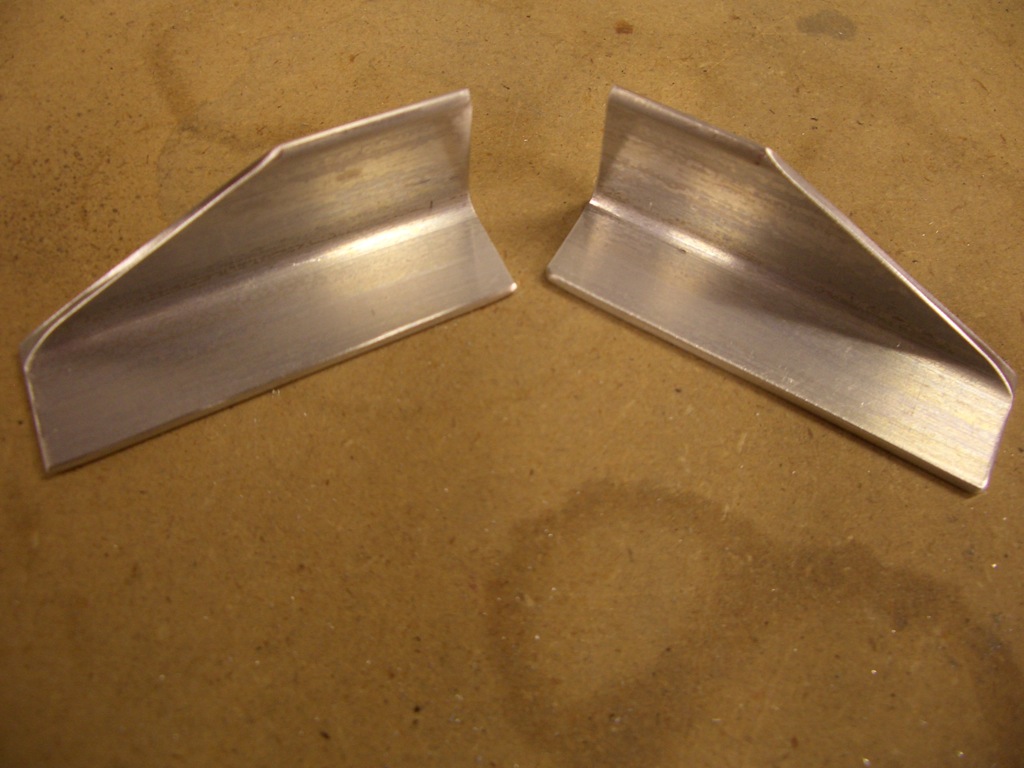
The side stiffeners are rather poorly bent from the factory. The joggle is necessary so that the stiffener can overlap F-704, but the way they bend these causes the leg of the angle near the joggle to bend outward which prevents it from lying flat on the skin.
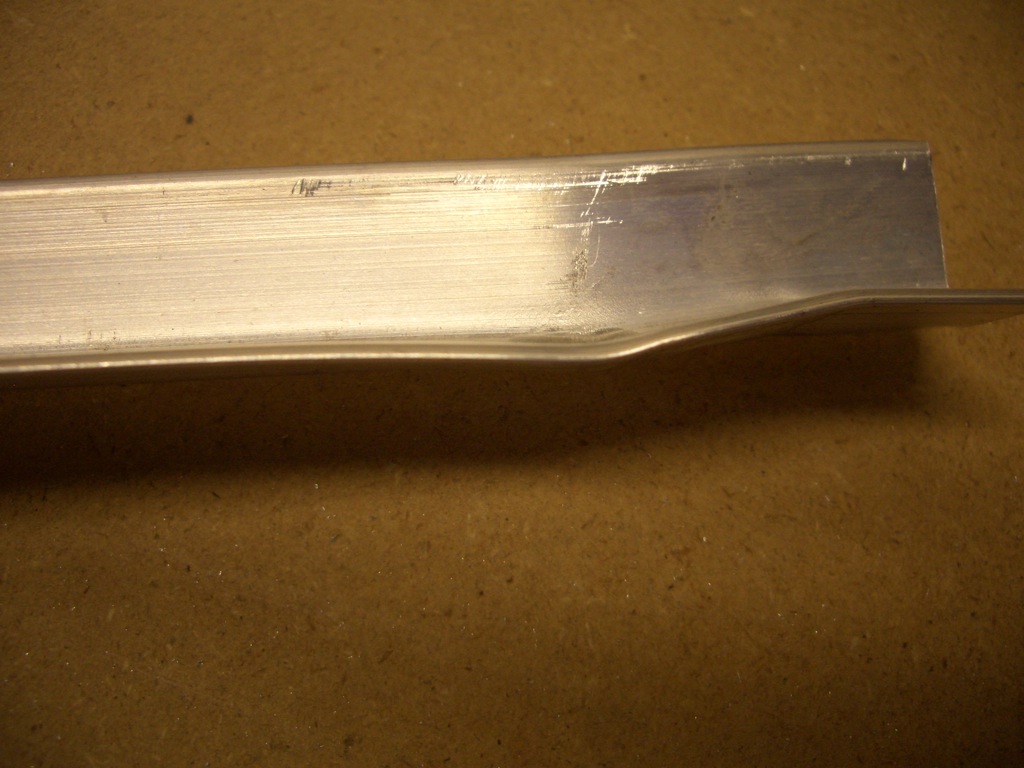
To correct this, I laid a piece of scrap 1/8″ angle stock (twice the thickness of the stiffener so it wouldn’t bend) against the side of the skin stiffener and inserted a second piece of scrap at the apex of the bend.

I then used my hand squeezer to slightly overbend the leg of the angle. It’s easy to overdo it here, so watch out.
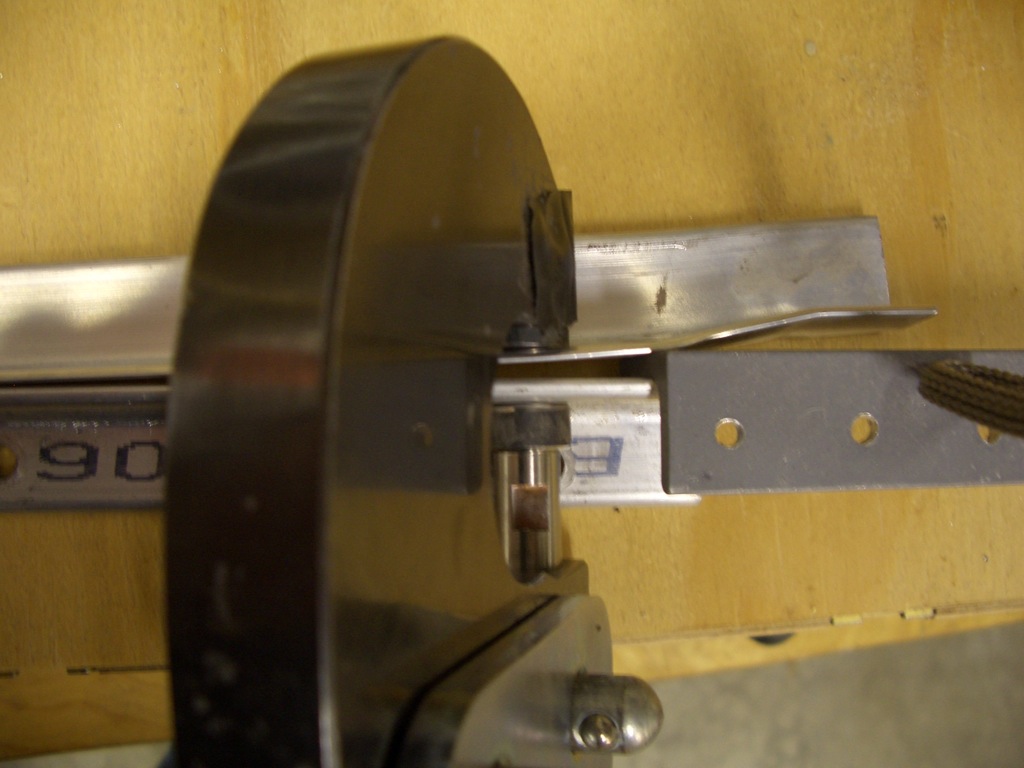
Now the leg of the angle is perfectly straight right up to the apex of the bend.
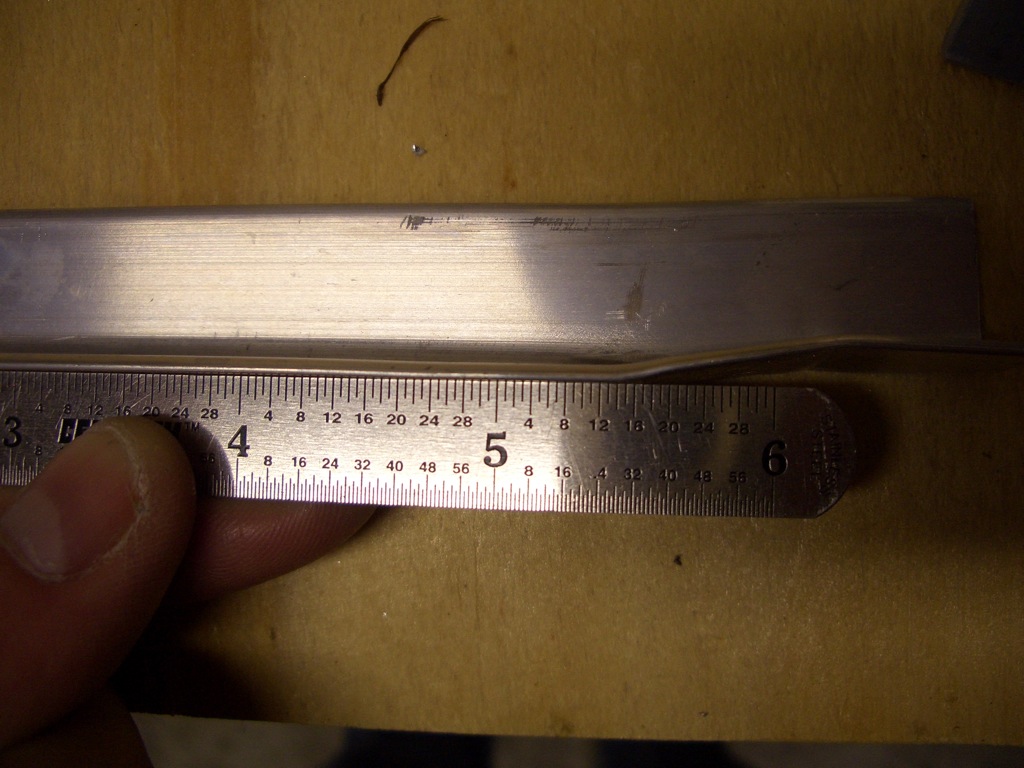
After trimming both ends of the stiffener, I installed it and marked the forward hole to double check edge distance on this rivet (it’s the left hole in this picture). It turned out 1/32″ over 2d, so that’s perfect.
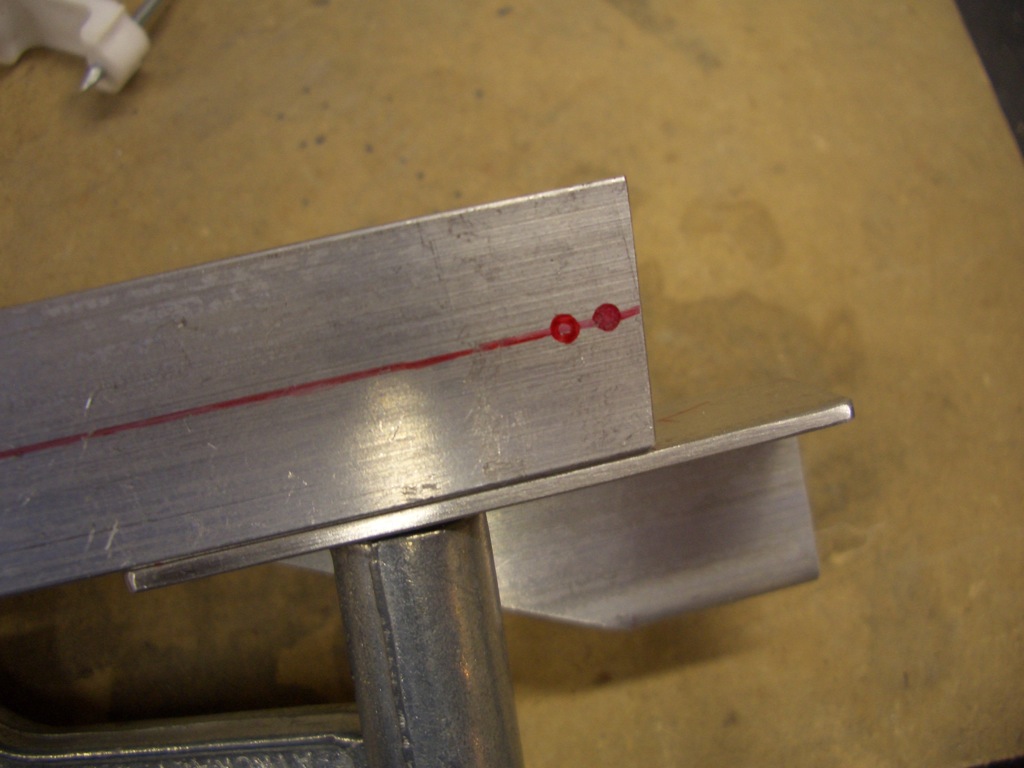
I match drilled the stiffener to the side skin.
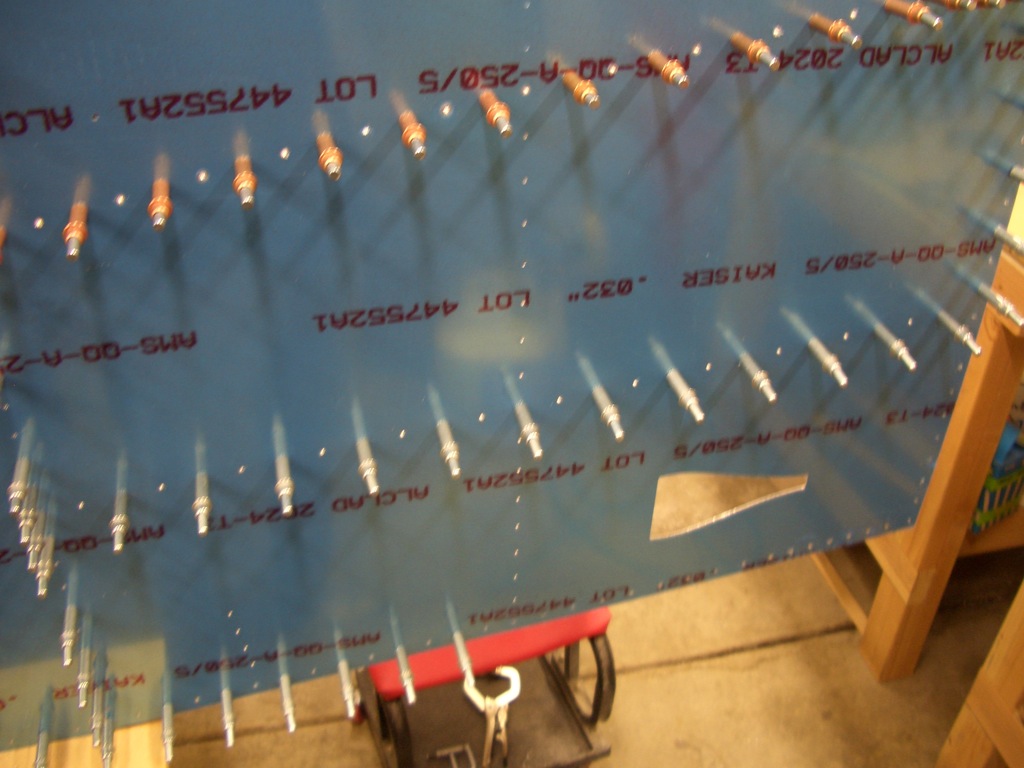
The I removed some of the clecos on the side skin so that I could get a 12″ drill bit in here to match drill the angle clips to the side stiffener.
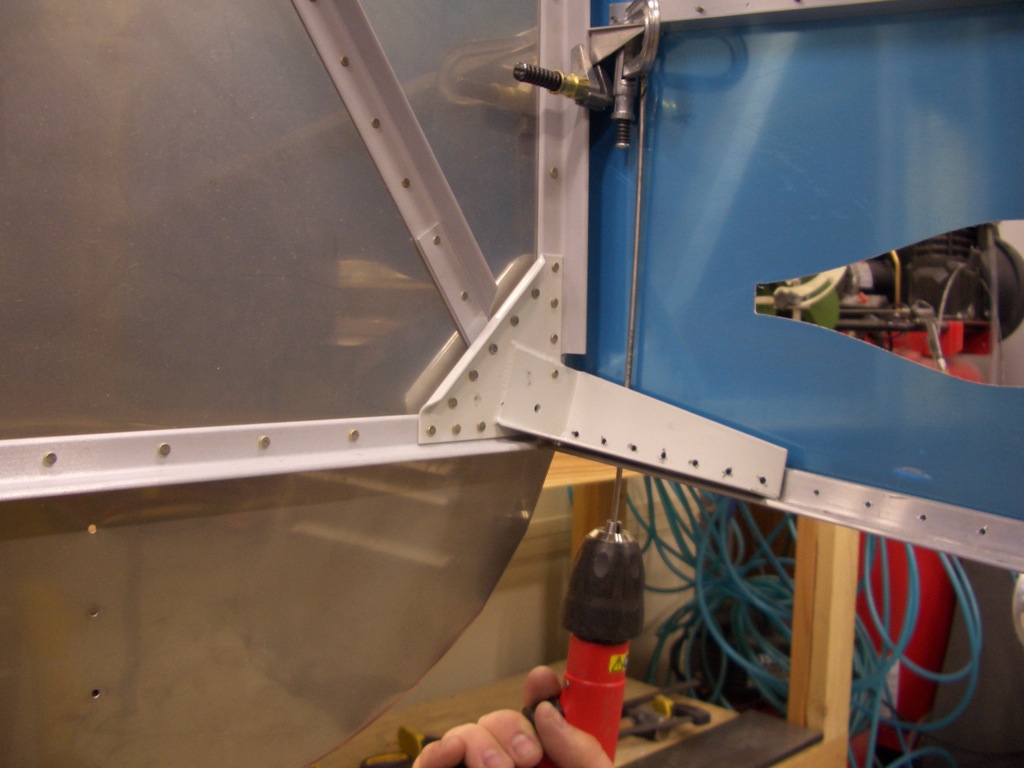
Finally, I marked the edges of the angle clip and drilled a hole in the center of the area.
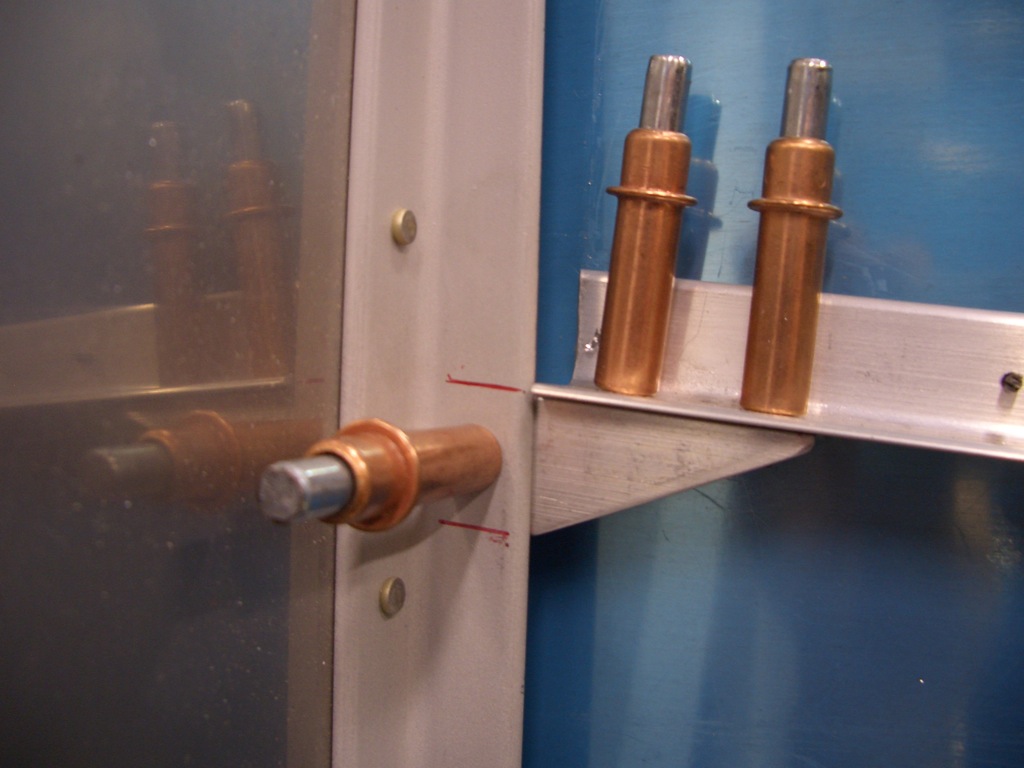
Edge distances came out great all around.
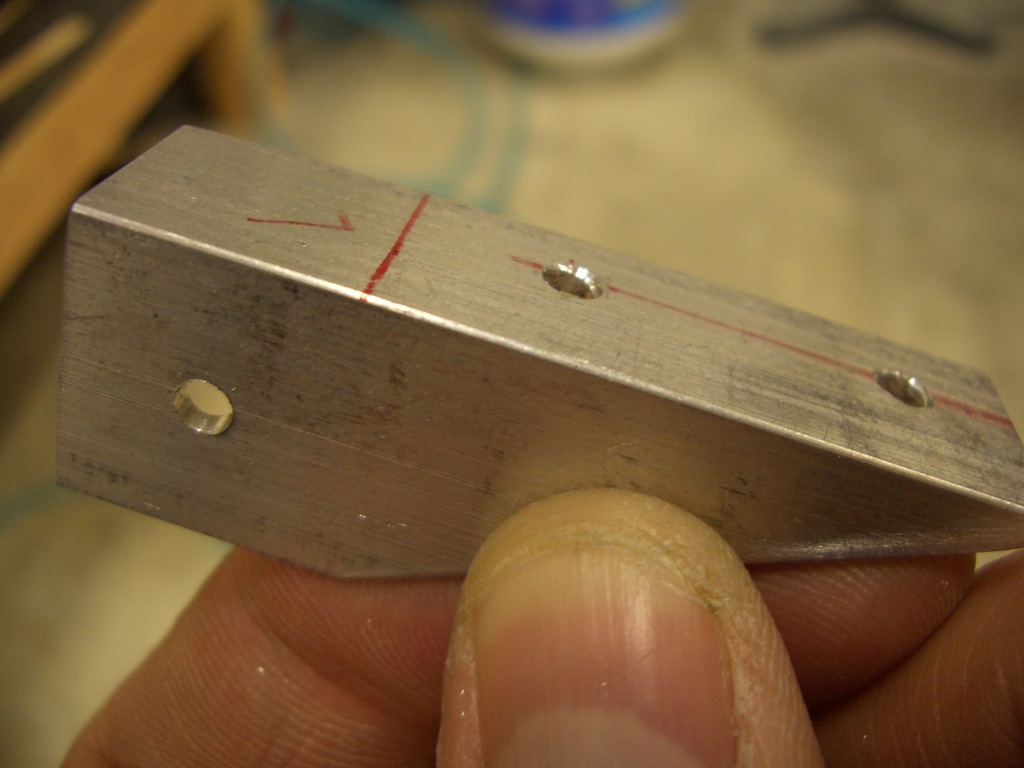
Here is the aft end showing how the stiffener steps up onto F-704. Notice also that the hole to the left is on the flat of the stiffener. I’ve noticed other builders having problems with the apex of the bend being forward of this hole which creates a gap between the skin and the stiffener at this hole. If you trim the aft end of the stiffener first to get this hole in the right spot and then trim the forward end to just touch the firewall stiffener, then you can avoid this.
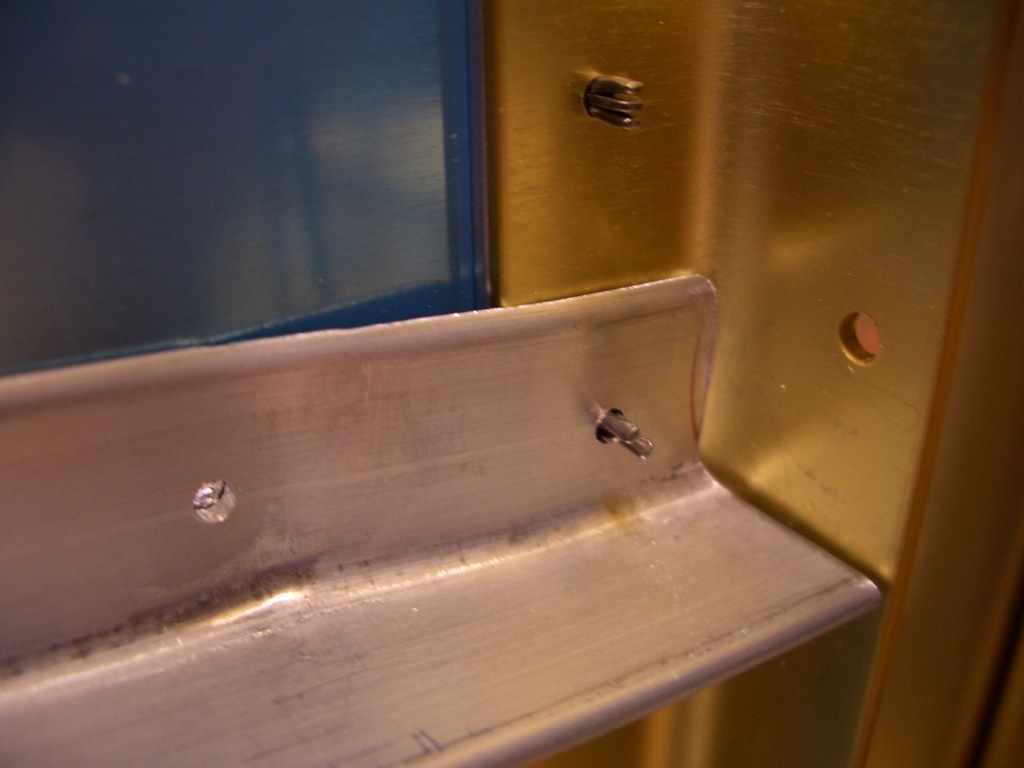
So far during the build, I’ve almost used 1 qt of primer. I was just about out, so I ordered another quart. This should easily get me through the rest of the build. Because I’m only priming the interior structure and not the wing skins, and even then I’m applying a very thin coat (more of a fogging than a coating), I’m sure this will get me through the rest of the build. I doubt I’ll add more than a pound or two of primer to the whole plane.
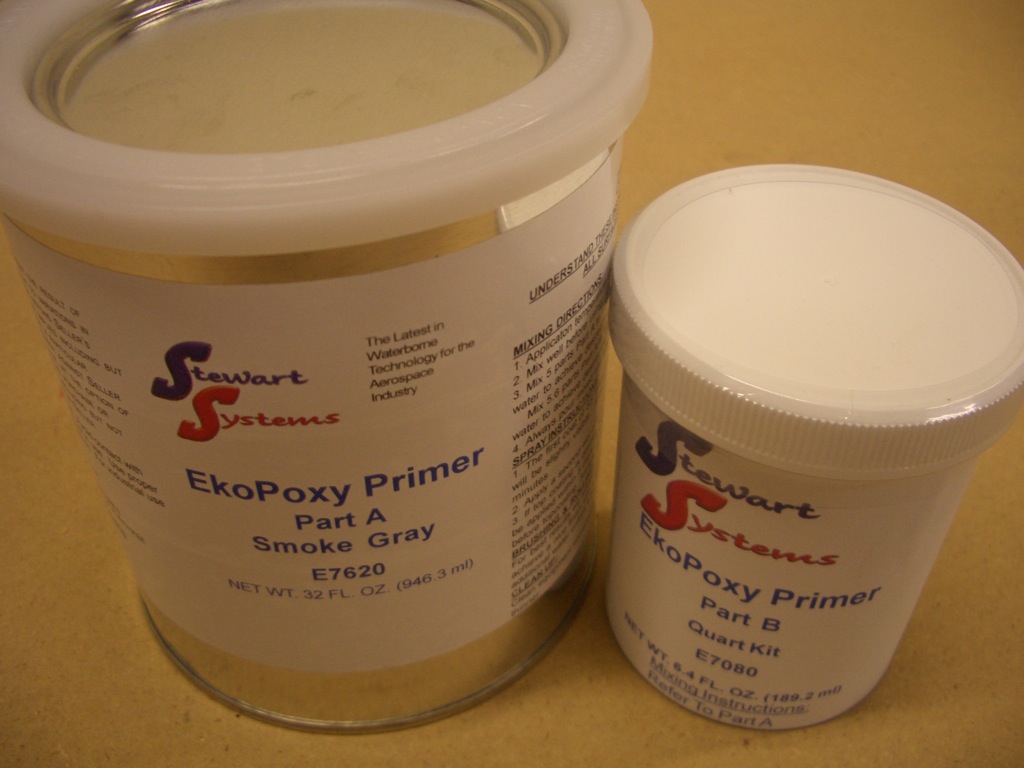
I also picked up 8 brand new Hartwell H-4603 latches off eBay for $5 each. I’m thinking about using some of these for a couple of storage areas under the baggage floors and I may use a one or two for the oil door in the cowl. Similar latches are $90/ea at Aircraft Spruce, so this was quite a deal.
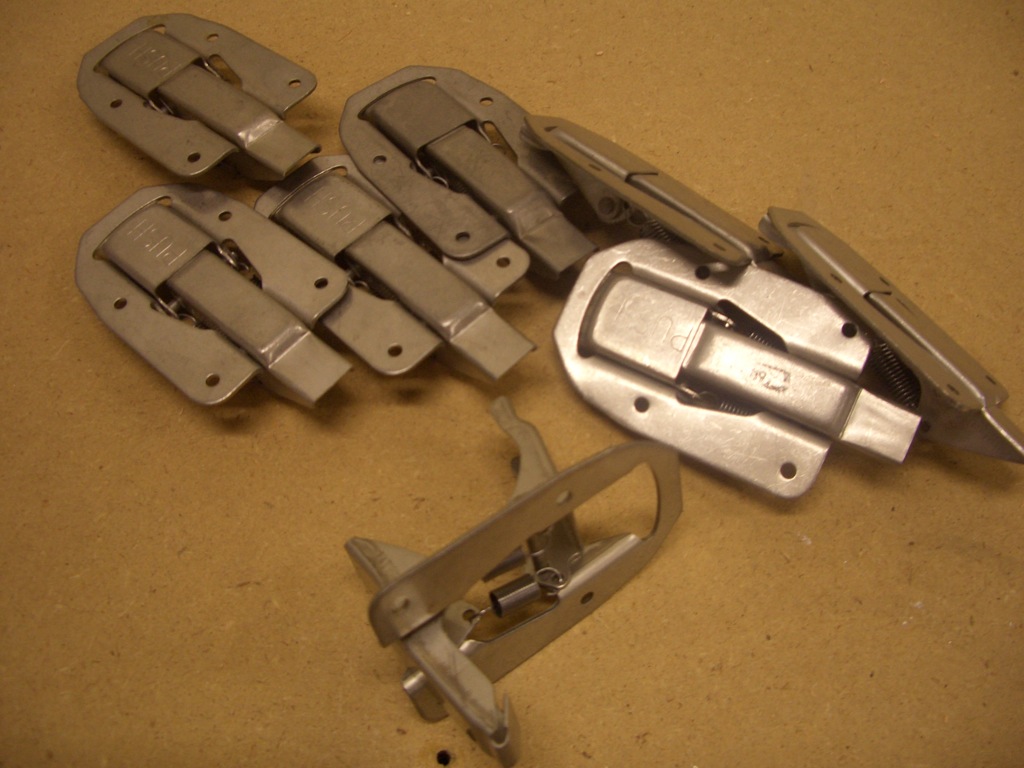
I got started tonight by quadruple checking that the firewall was 5/8″ behind the leading edge of the skin and then drilling the firewall to the side skin. I also drilled the forward seven holes in the upper longeron and into the engine mount (the seven copper colored clecos at the bottom of the picture).
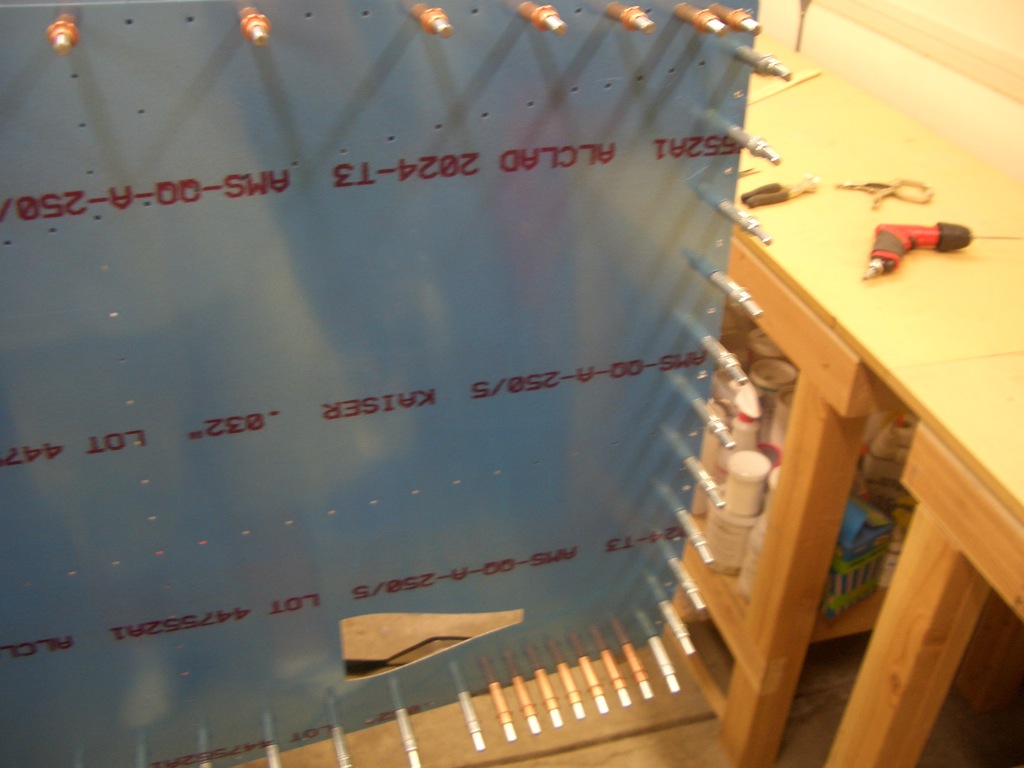
Next, I fit and drilled the F-713 aux longerons. These require a slight twist since the side skins curve inward near the bottom of the firewall. I used the same technique I did for the upper longerons (clamp and use a large crescent wrench to twist the hell out of it).
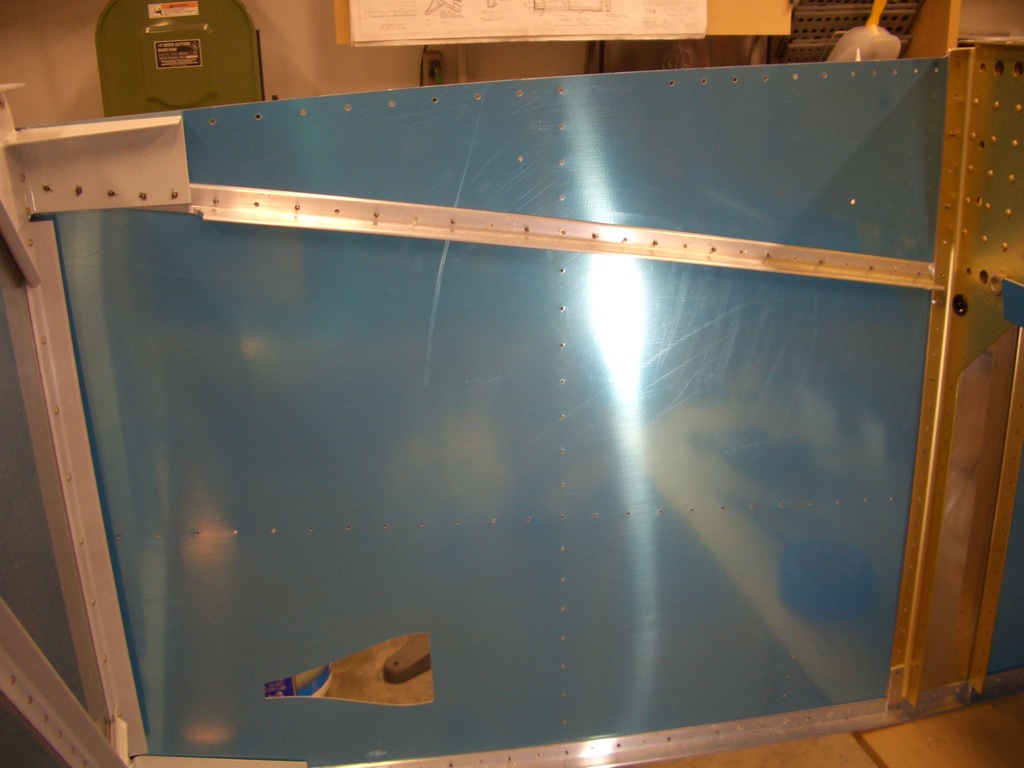
The aft end has to be cut to fit tightly against F-704.
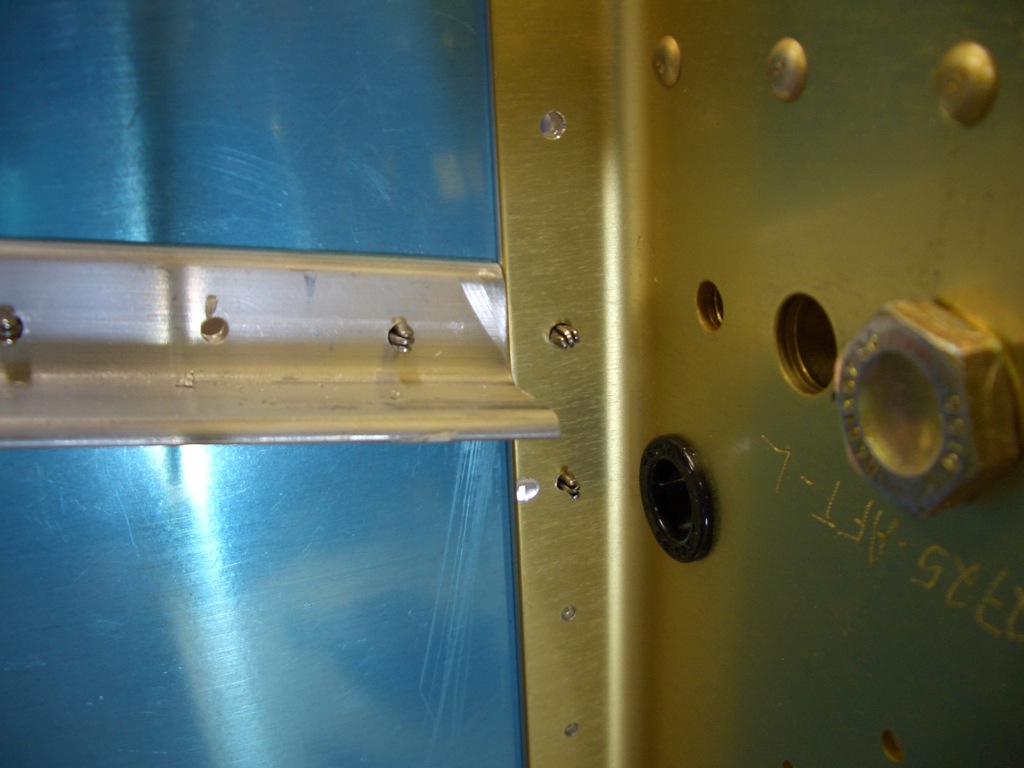
The forward end ties the side skins to the lower engine mount. There will also be a gusset here which ties all of this into the firewall stiffener that is visible in the lower left of the picture.
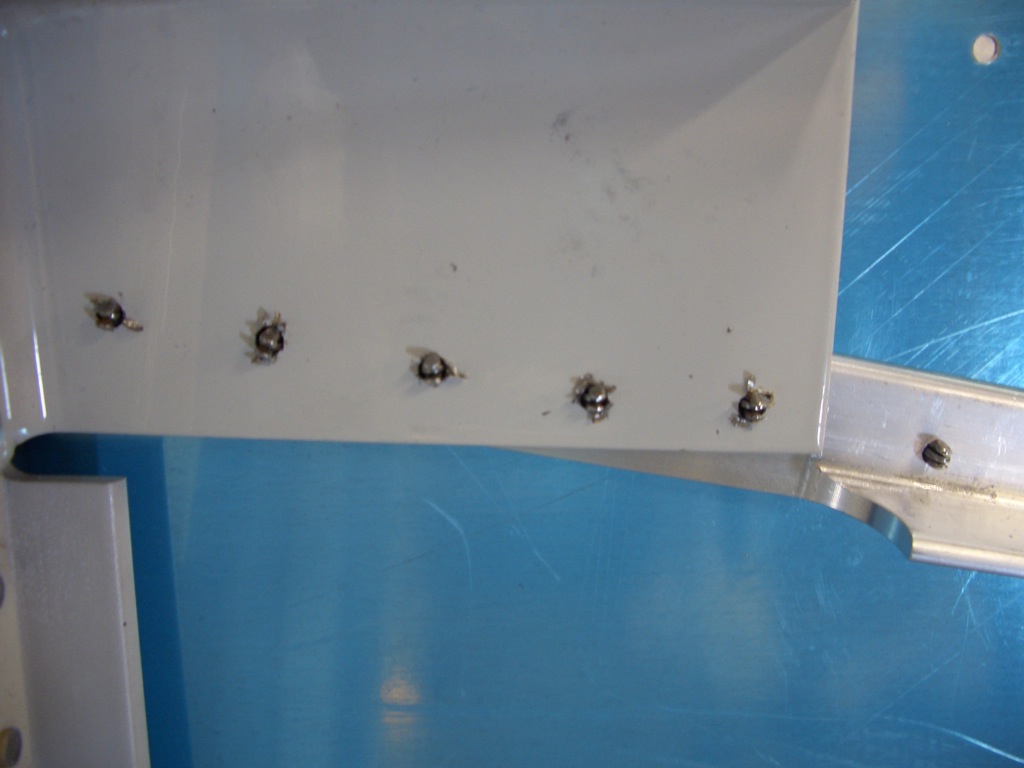
Here is the outside of the aux longeron. This is one of the few areas on the outside of the plane which uses AD4 (1/8″) rivets. Most of the exterior uses AD3 (3/32″) rivets.
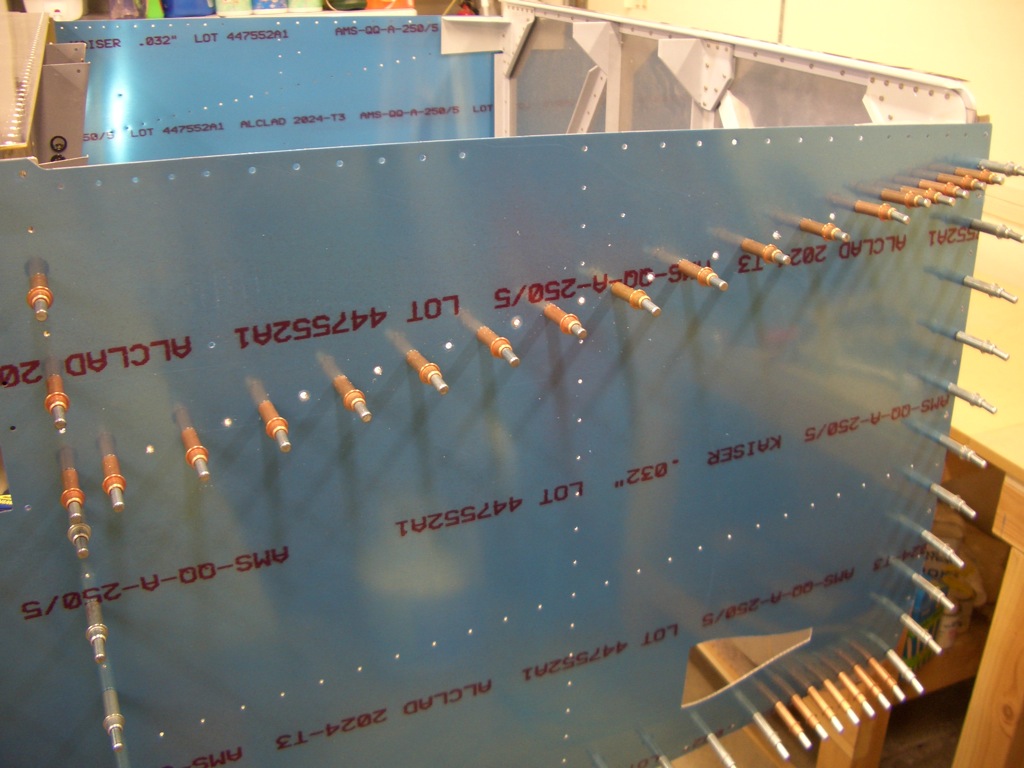
After spending 30 minutes doing the left side, I knocked out the right side in about 10 minutes.
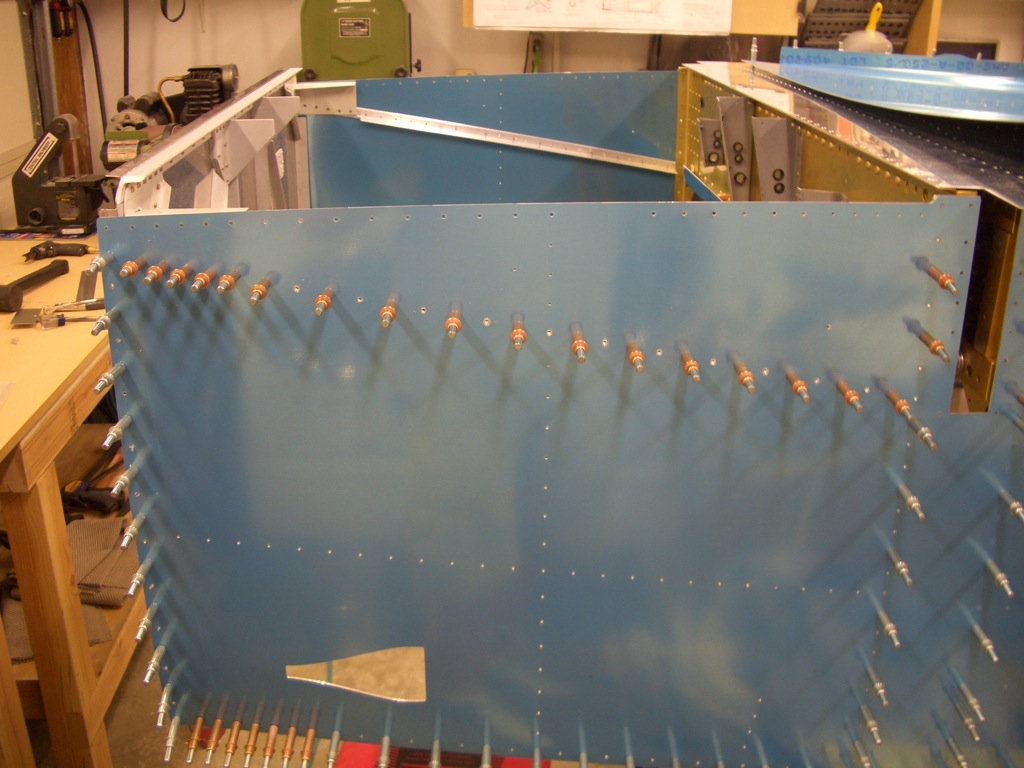
My next door neighbor graciously agreed to let me store my wings in his garage, tied up to the rafters. I fabricated a couple of supports for each wing by covering 2x4s with carpet padding and drilling holes in each end for a rope. We placed the wings on the supports and winched then up to the ceiling. I tied some extra rope around the spar at each end as a safety measure.
I came out this afternoon and drilled the right longeron to the side skins. This went much quicker than the left since I switched to a new sharp 3/32″ drill bit.
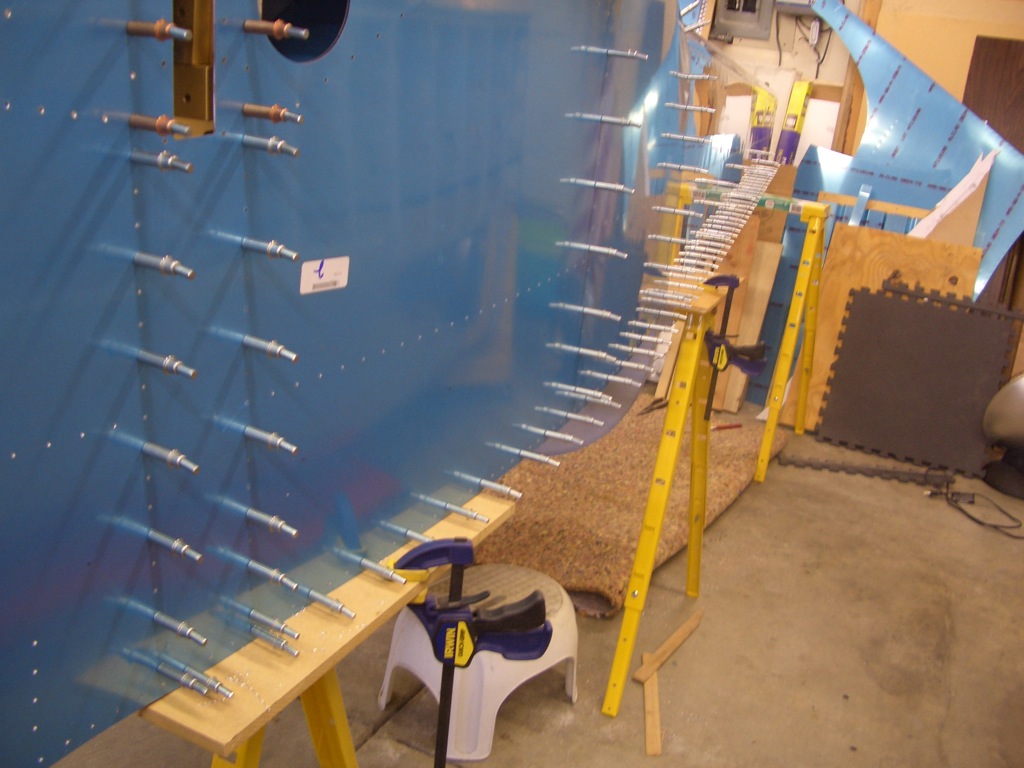
As I mentioned yesterday, the longerons have to be cut back 3/4″ from the firewall. I marked this dimension and then cut it off with a die grinder and cutoff disk and filed to the line.
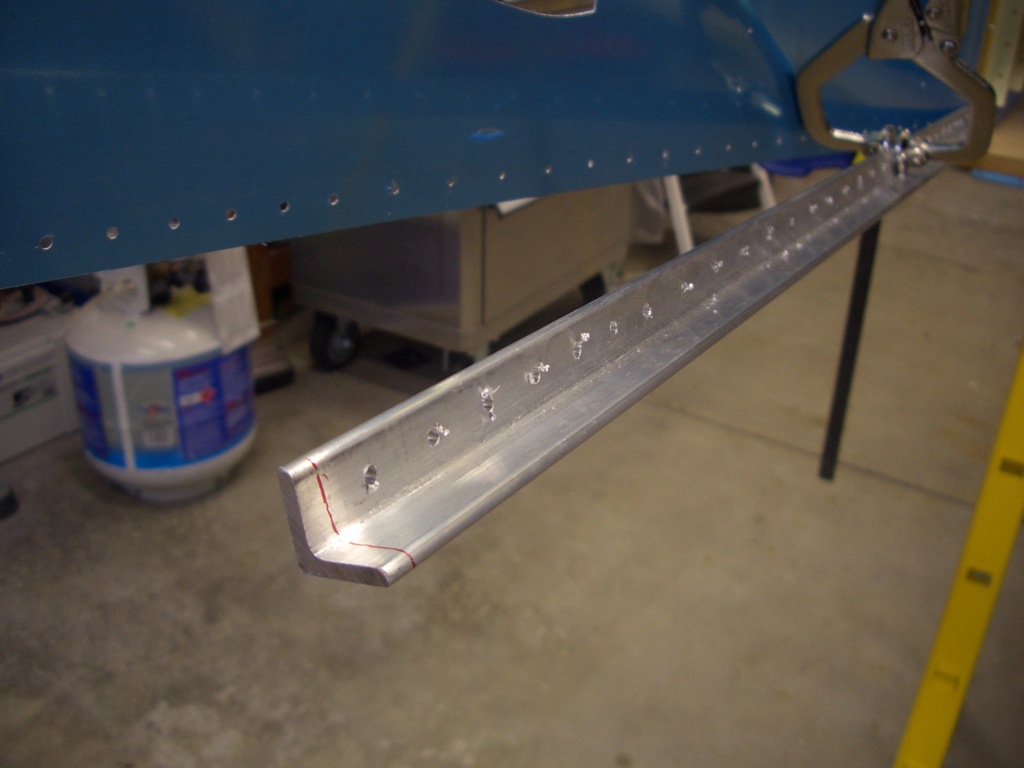
Two F-704 connector straps need to be fabricated out of 0.063 sheet. The kit provides pieces the right thickness and width, but too long. Cutting them to the dimensions listed on the plans first will mean you have to get them positioned precisely to ensure adequate edge distance on each end. Instead, I match drilled them to the structure first and then cut off the long end to ensure sufficient edge distance.
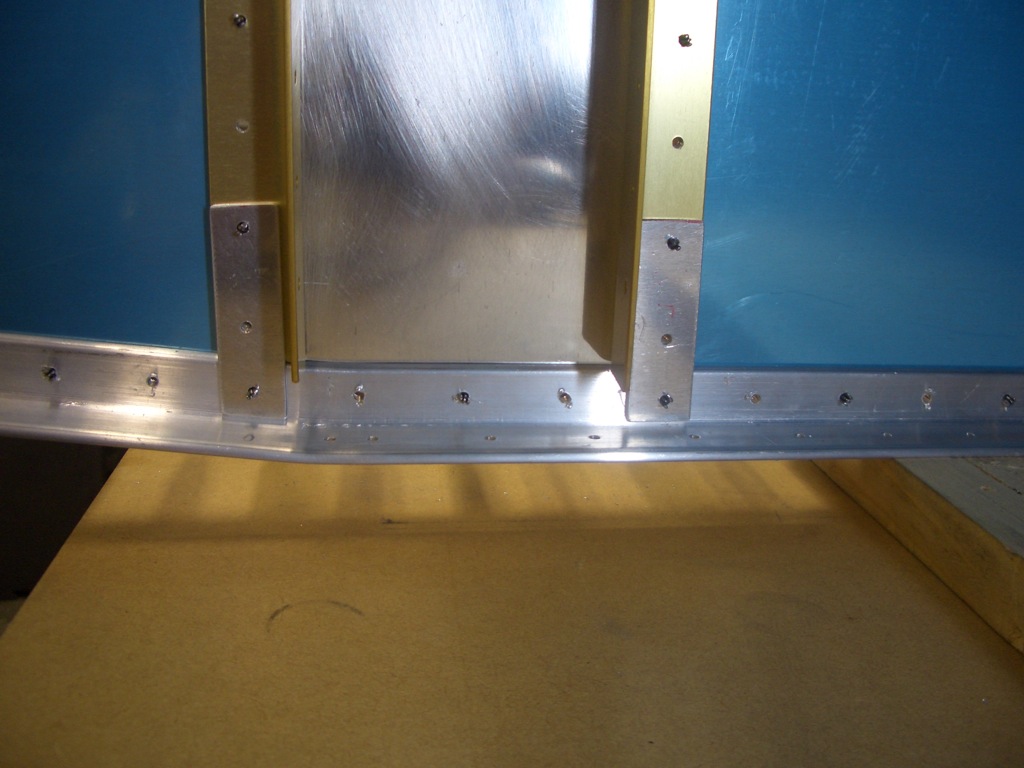
Where the engine mounts on the firewall nestle inside the longerons, clecos would interfere. You can’t just leave the holes empty though since the weight of the firewall would cause the longerons to sag. Fill these with some short AD470AD4 rivets (just sitting loose, not set) to ensure this doesn’t happen. I put a piece of tape over this to ensure they don’t fall out.
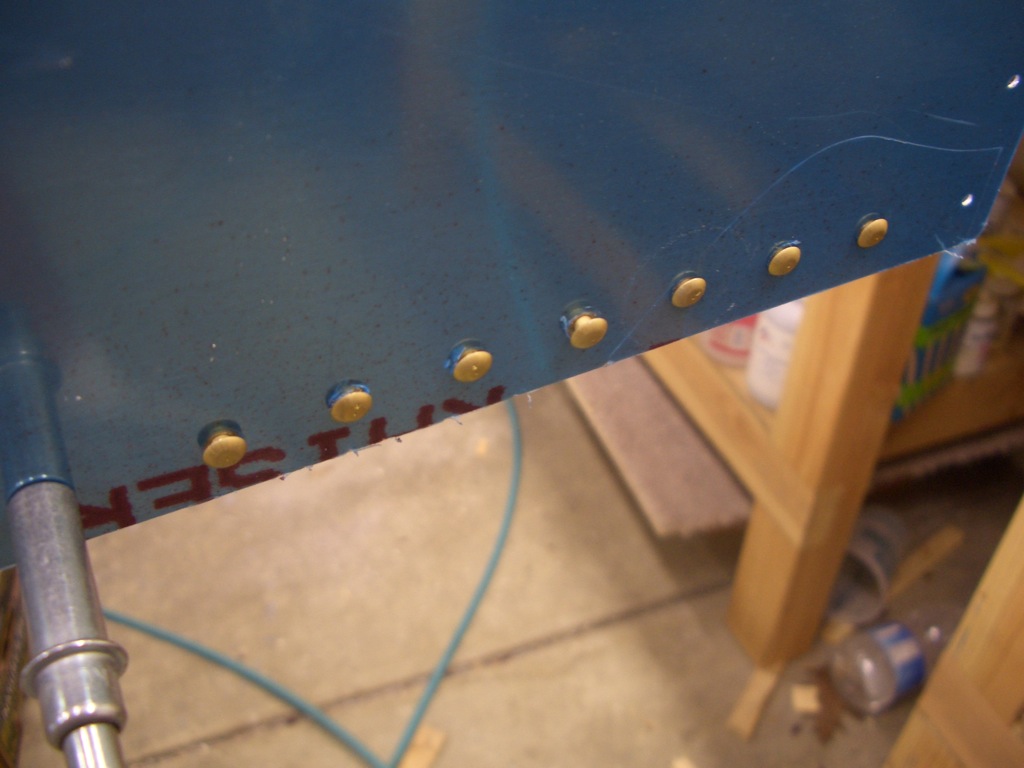
Next, the firewall is set in position to check for correct setback from the side skins. I had to take this off a couple of times to file back areas where the ends of the longerons were interfering with the firewall stiffeners.
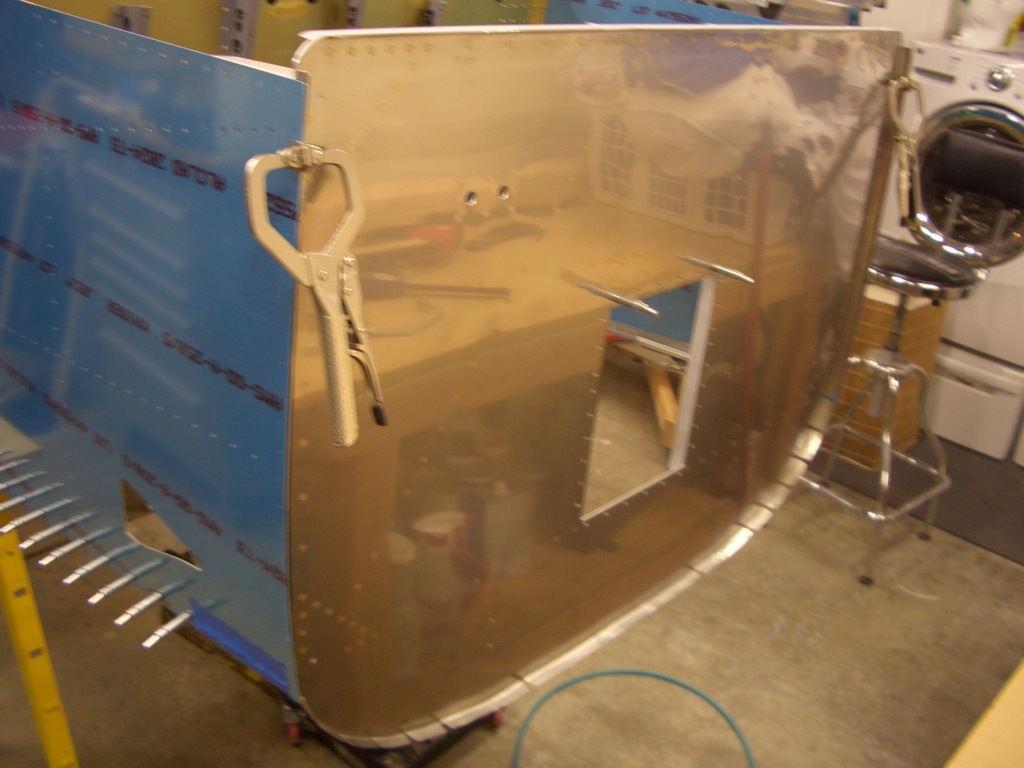
Finally, the forward bottom skin can be clecoed on. Make sure you draw the centerline on the lower firewall stiffener before doing this.
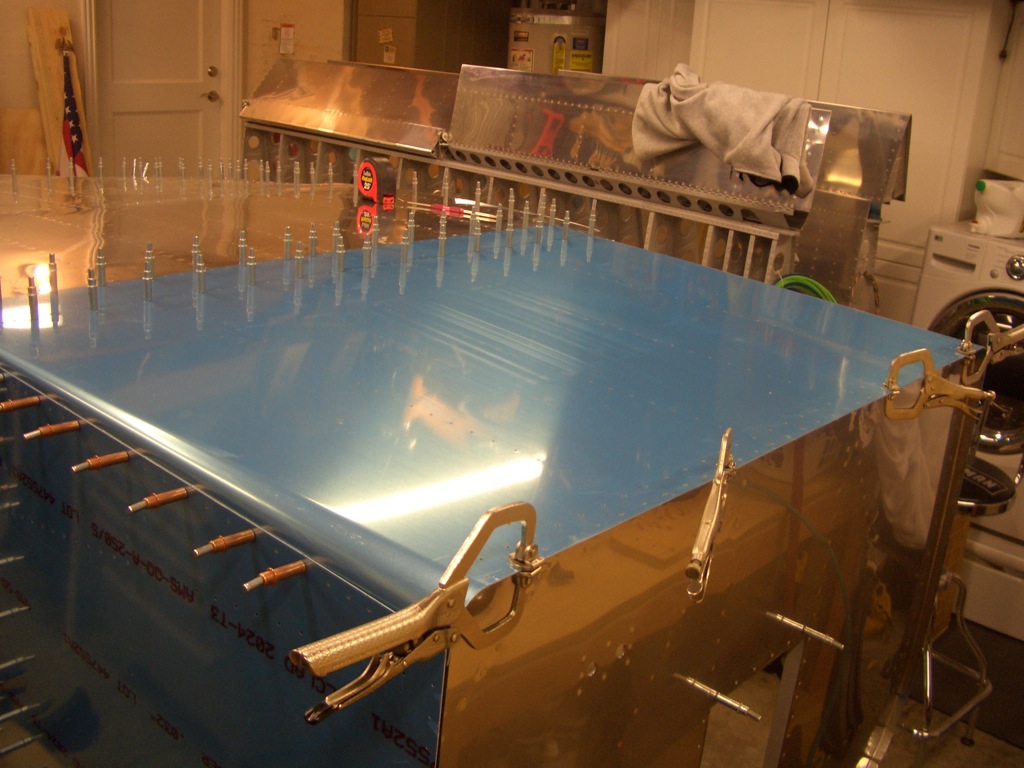
The centerline on this stiffener should land in the second row of holes on the bottom skin.
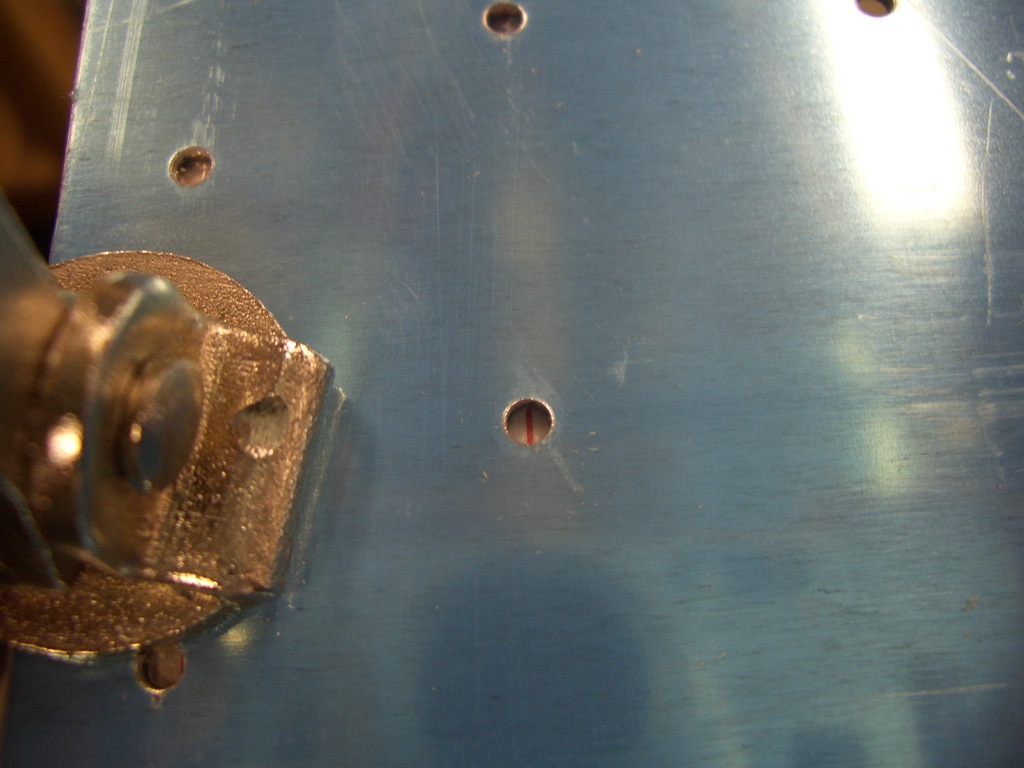
I drilled one hole at each end of the bottom stiffener to lock in the correct position of the firewall.
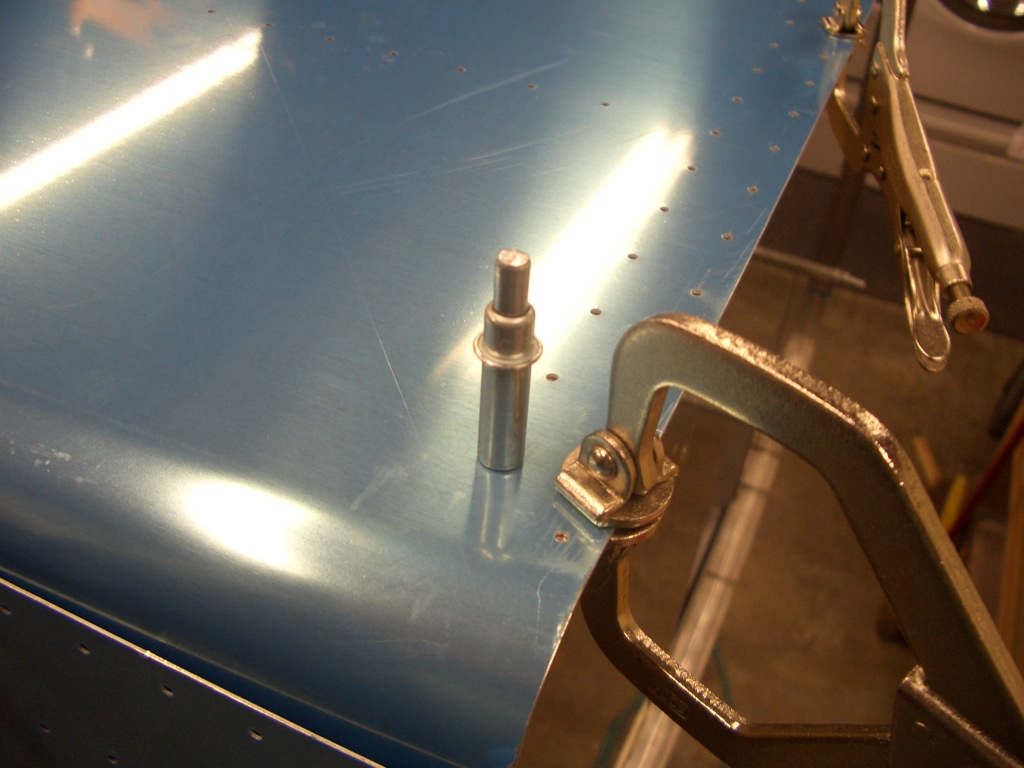
Next, I double checked that the ears on the upper engine mounts were nestled tightly into the corner of the longeron and tightly clamped.
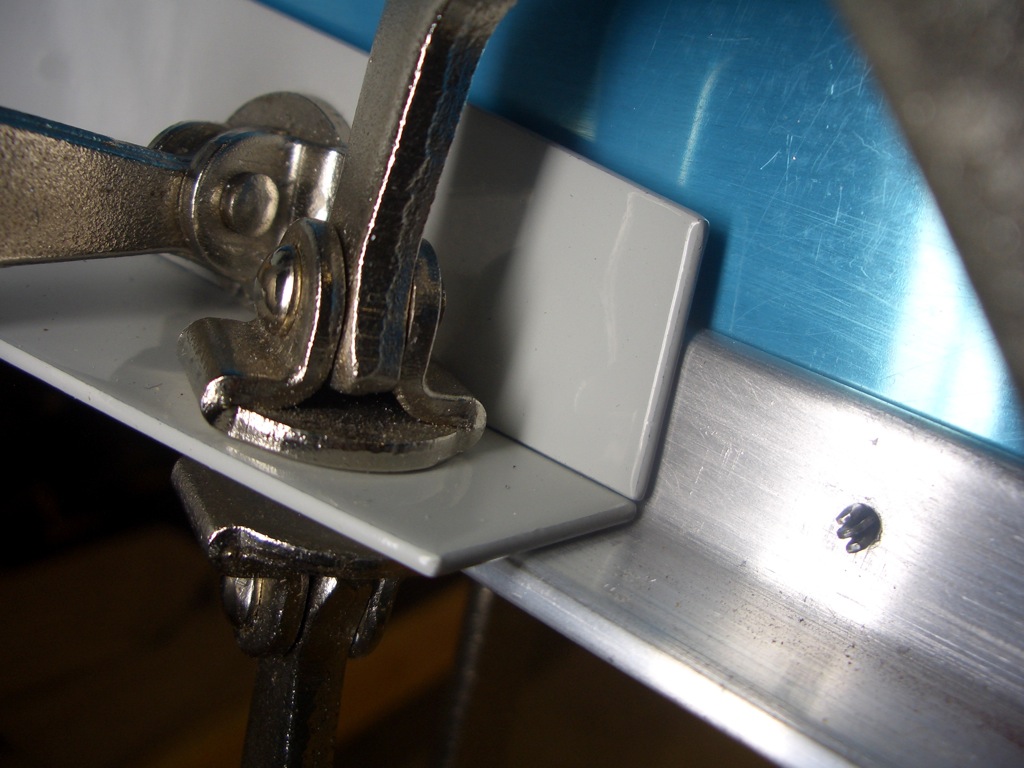
The plans say to take a break at this point, and it’s pretty late, so this is a good stopping point for the night.